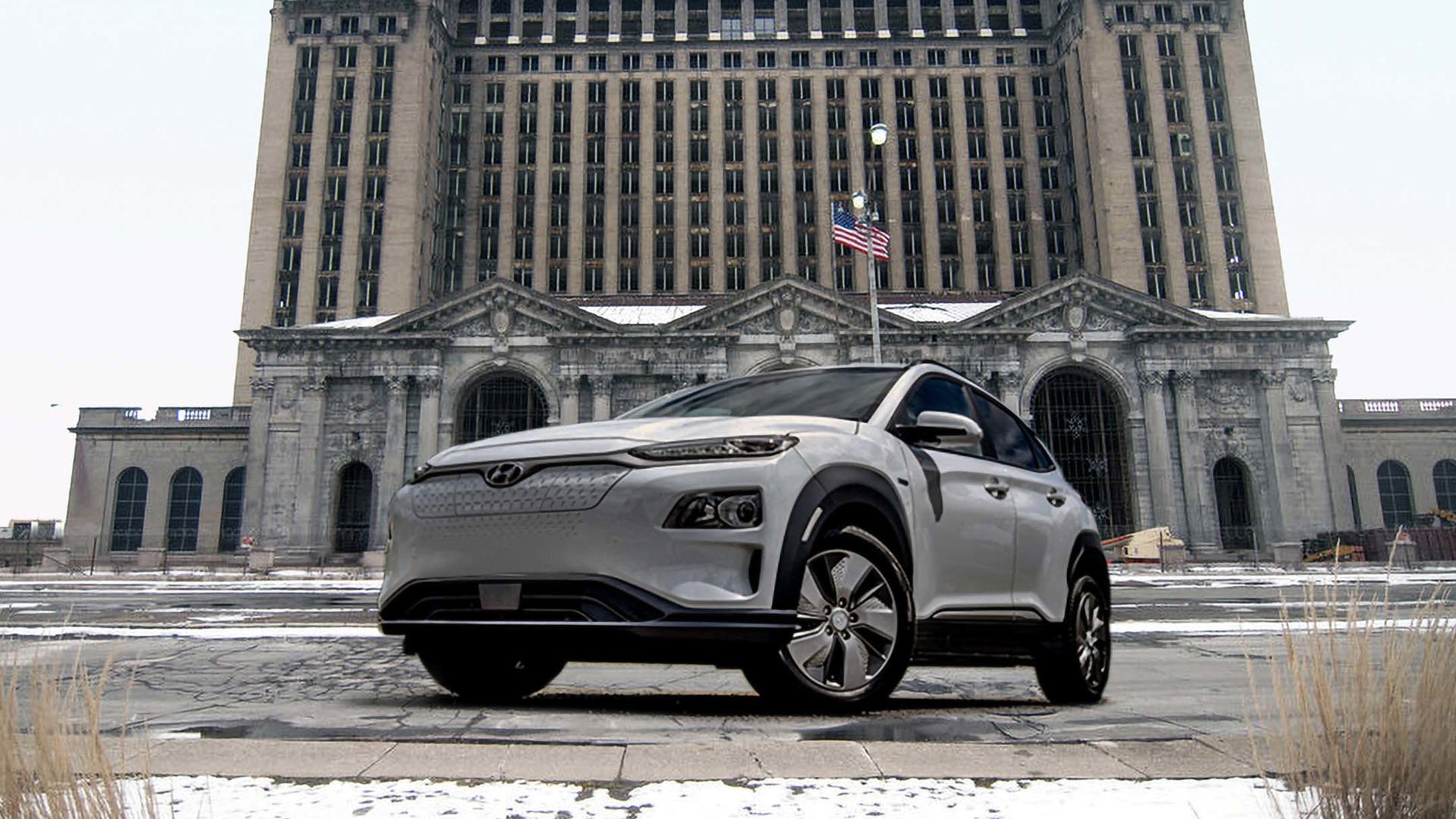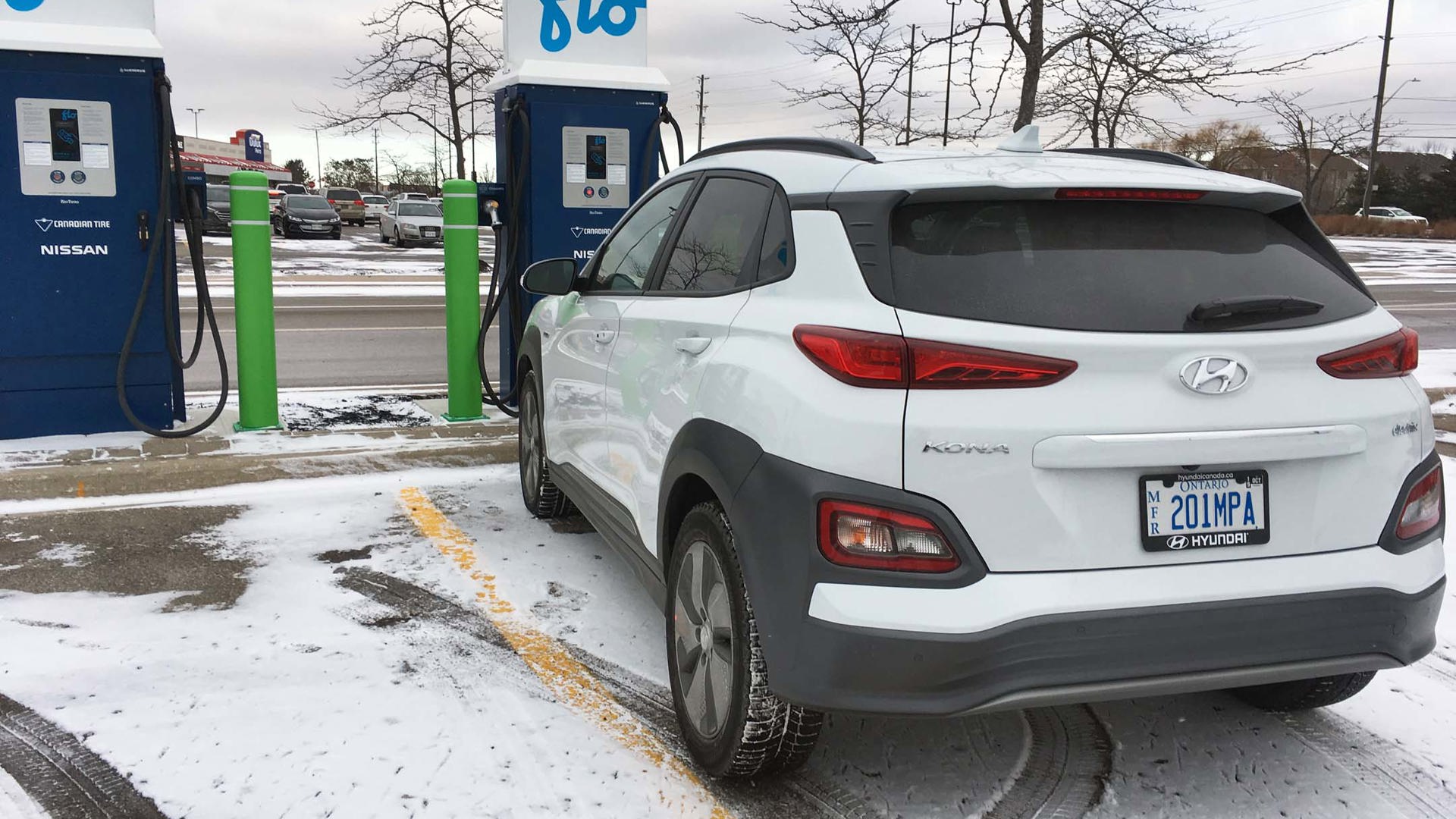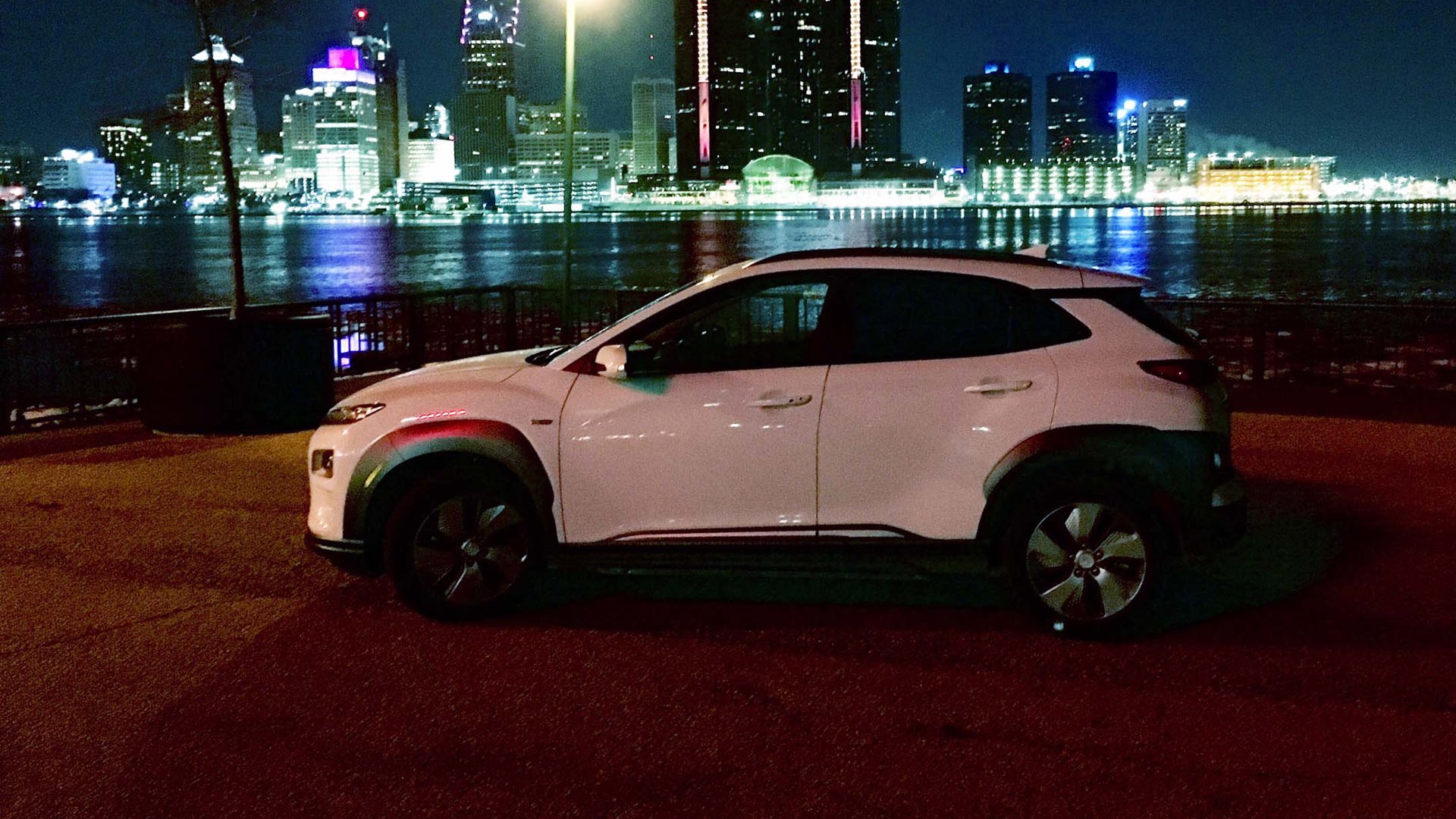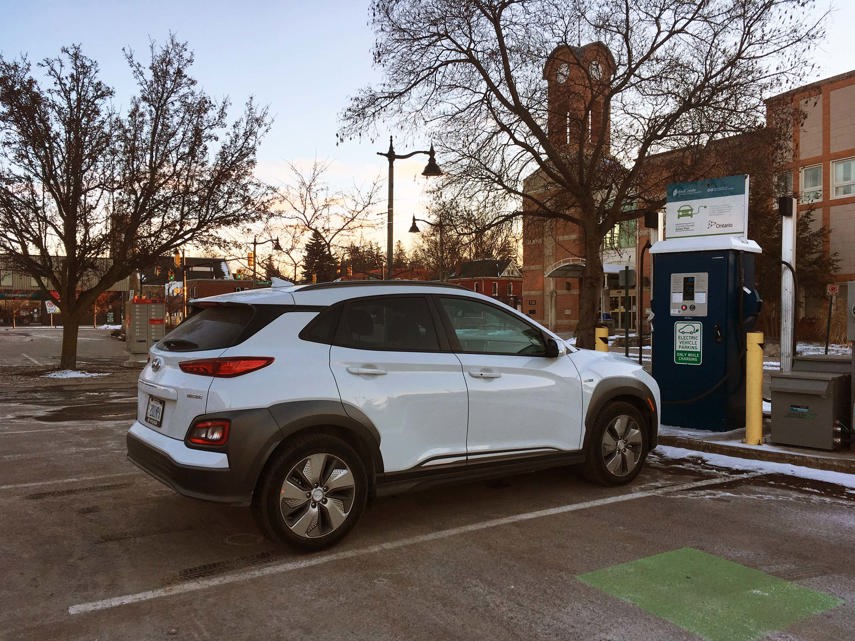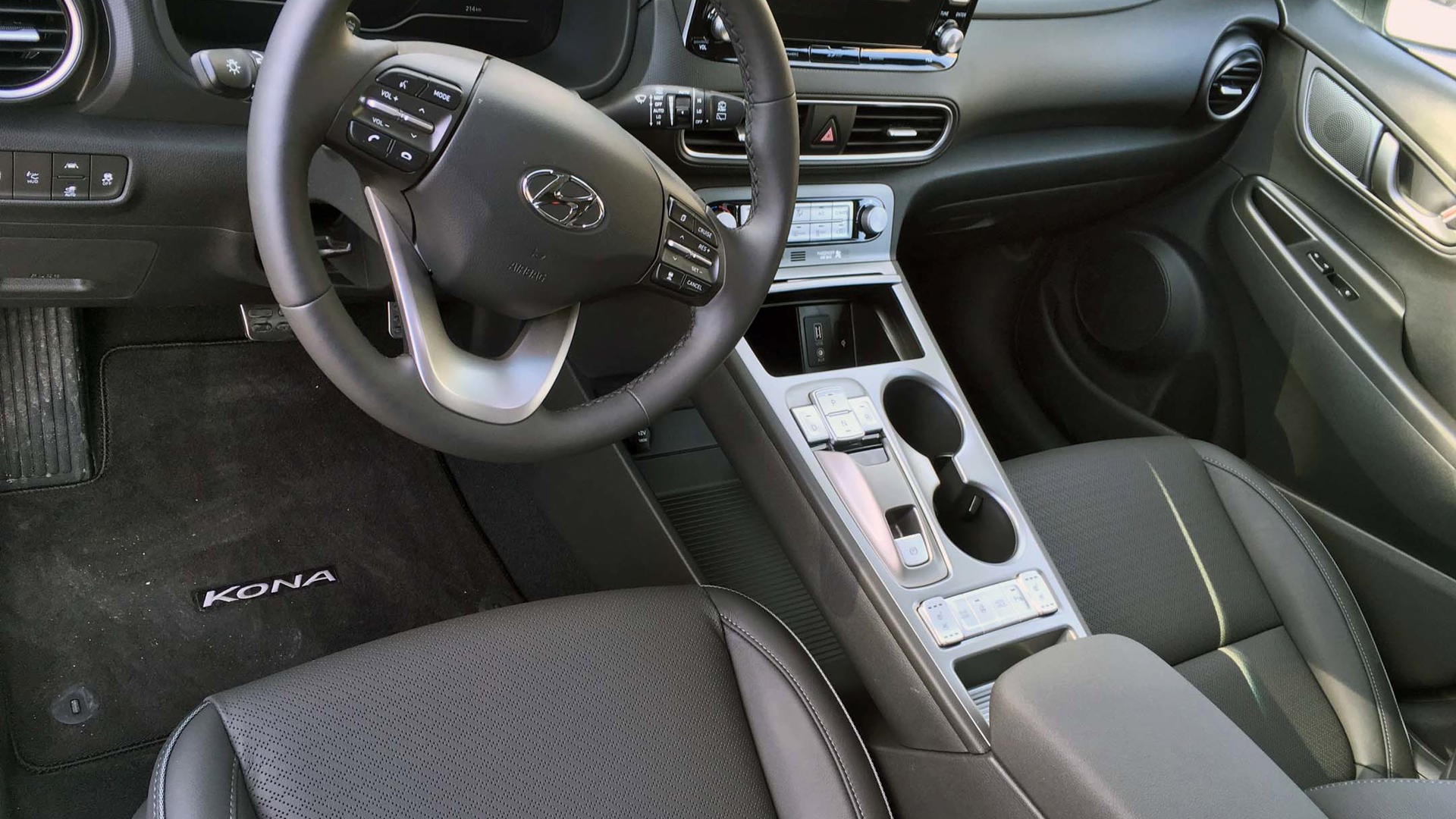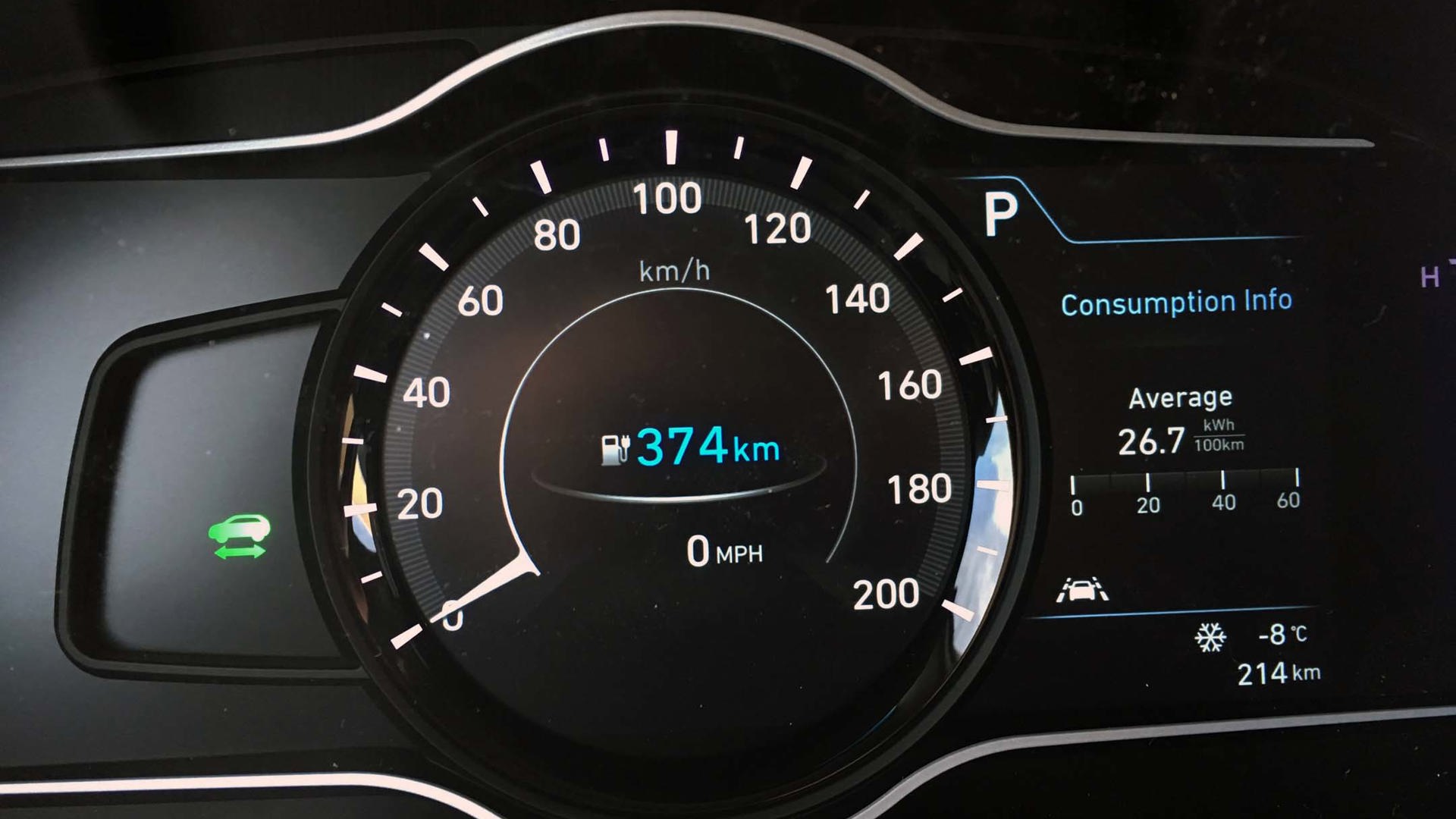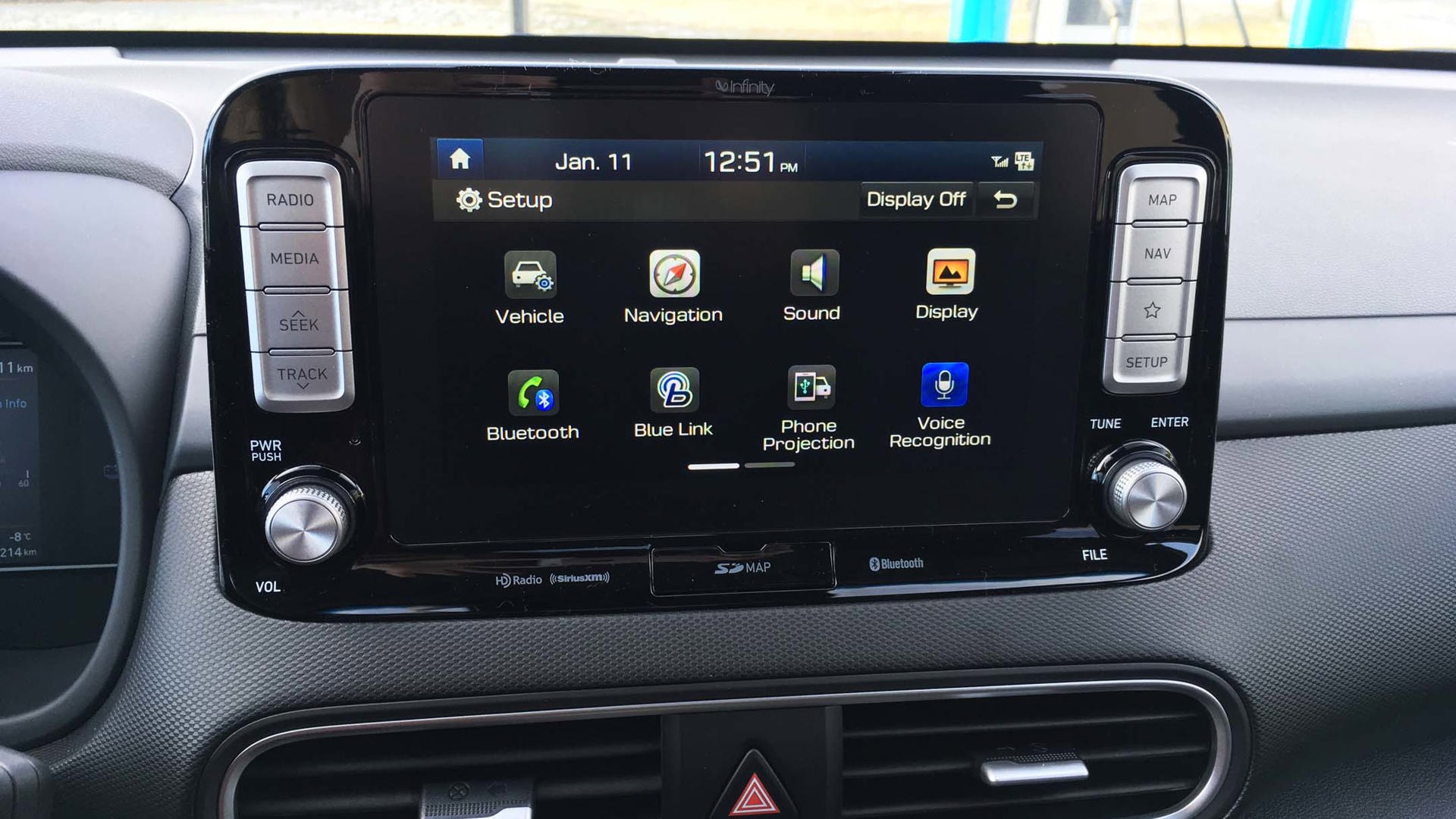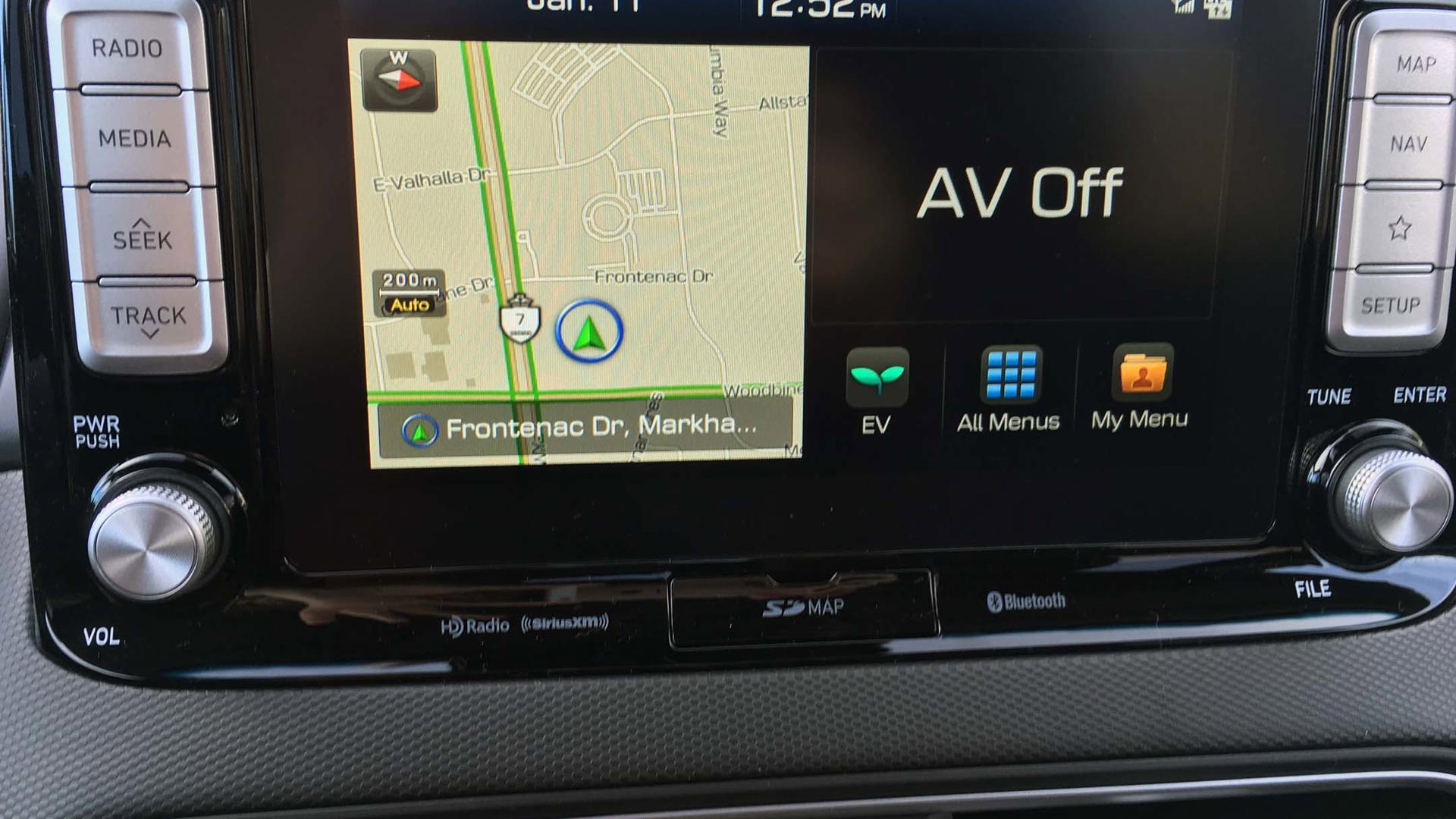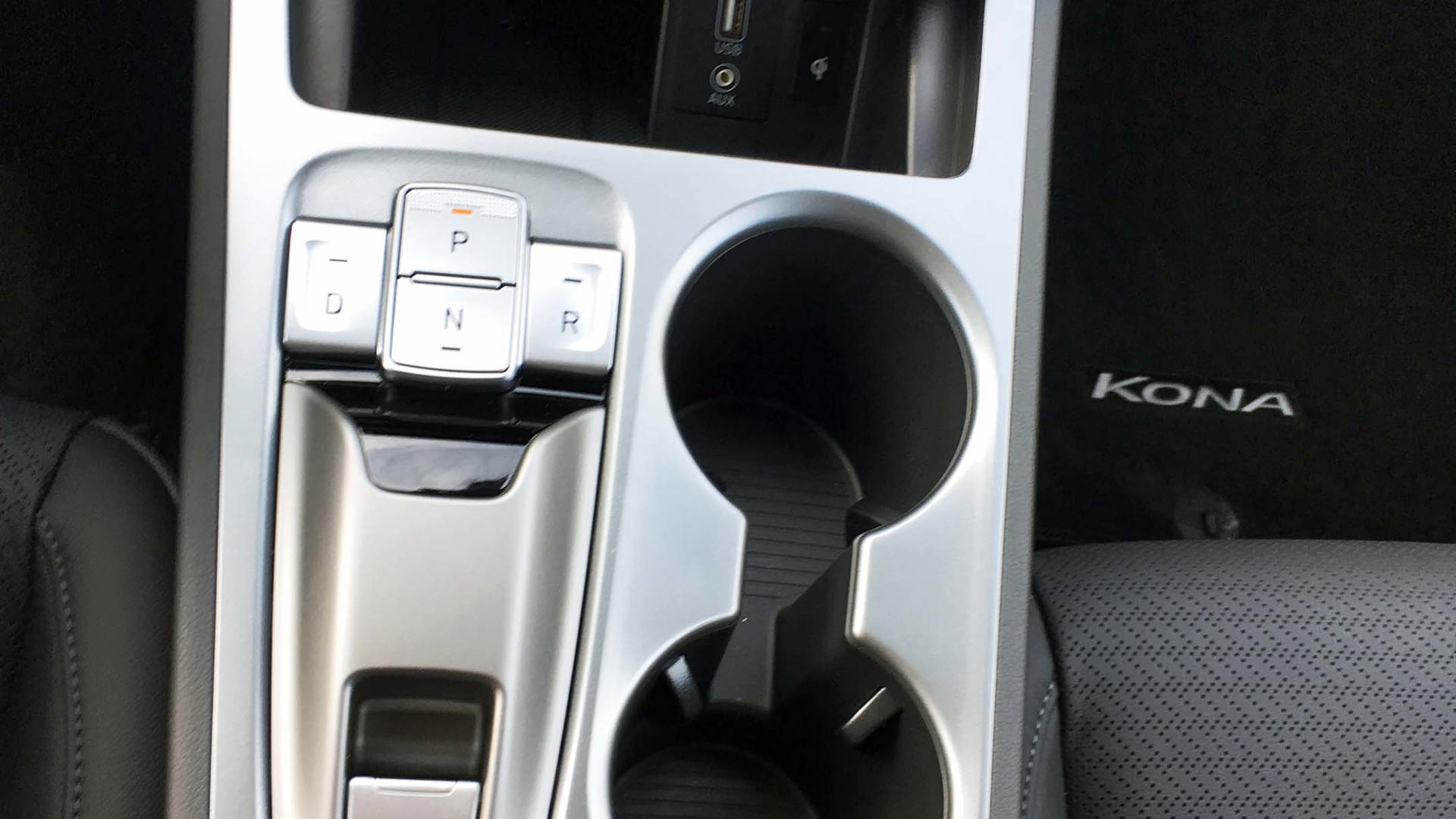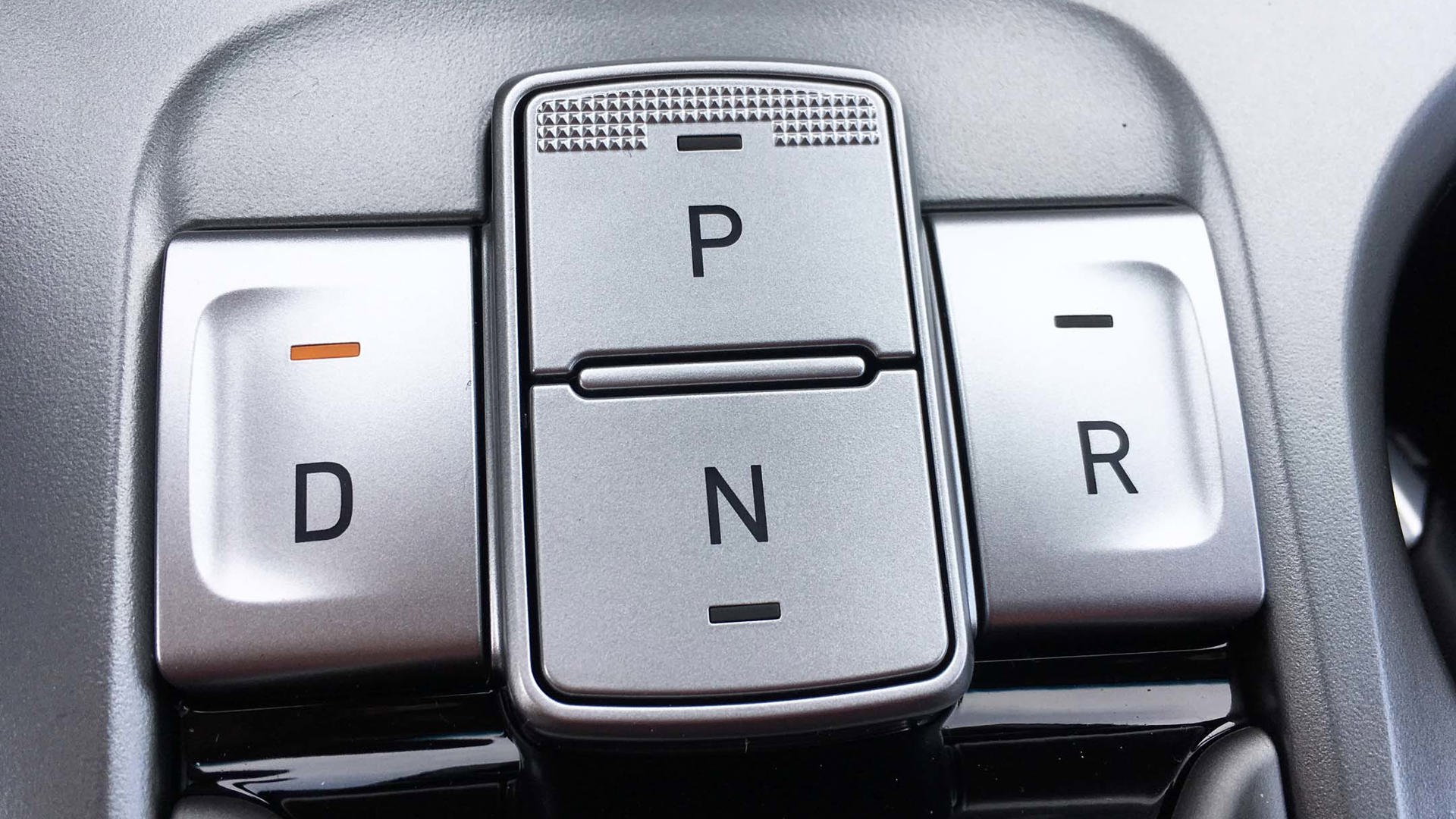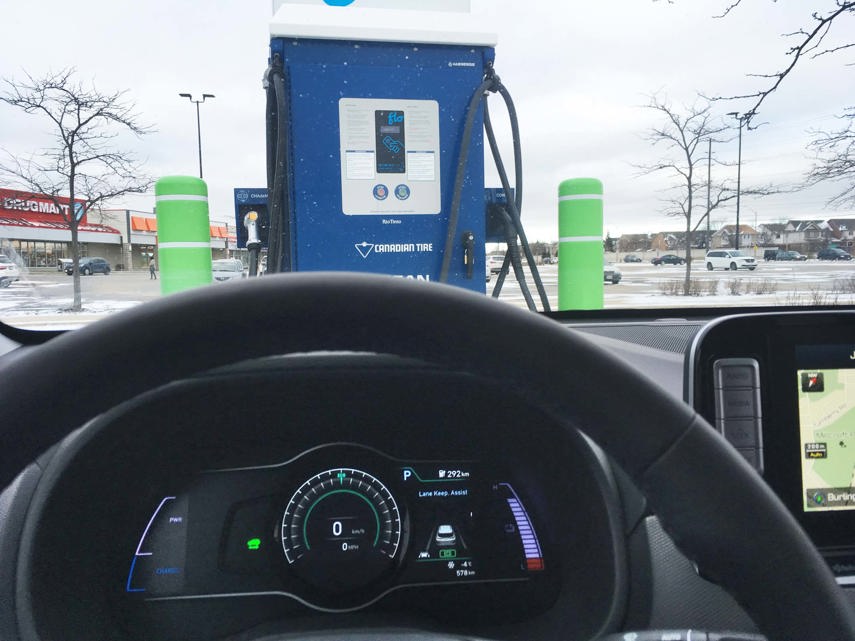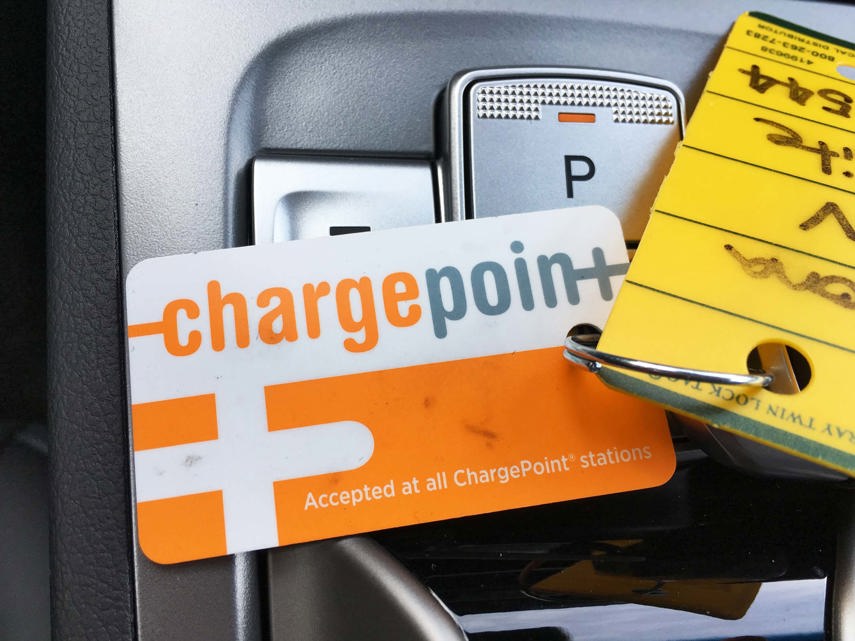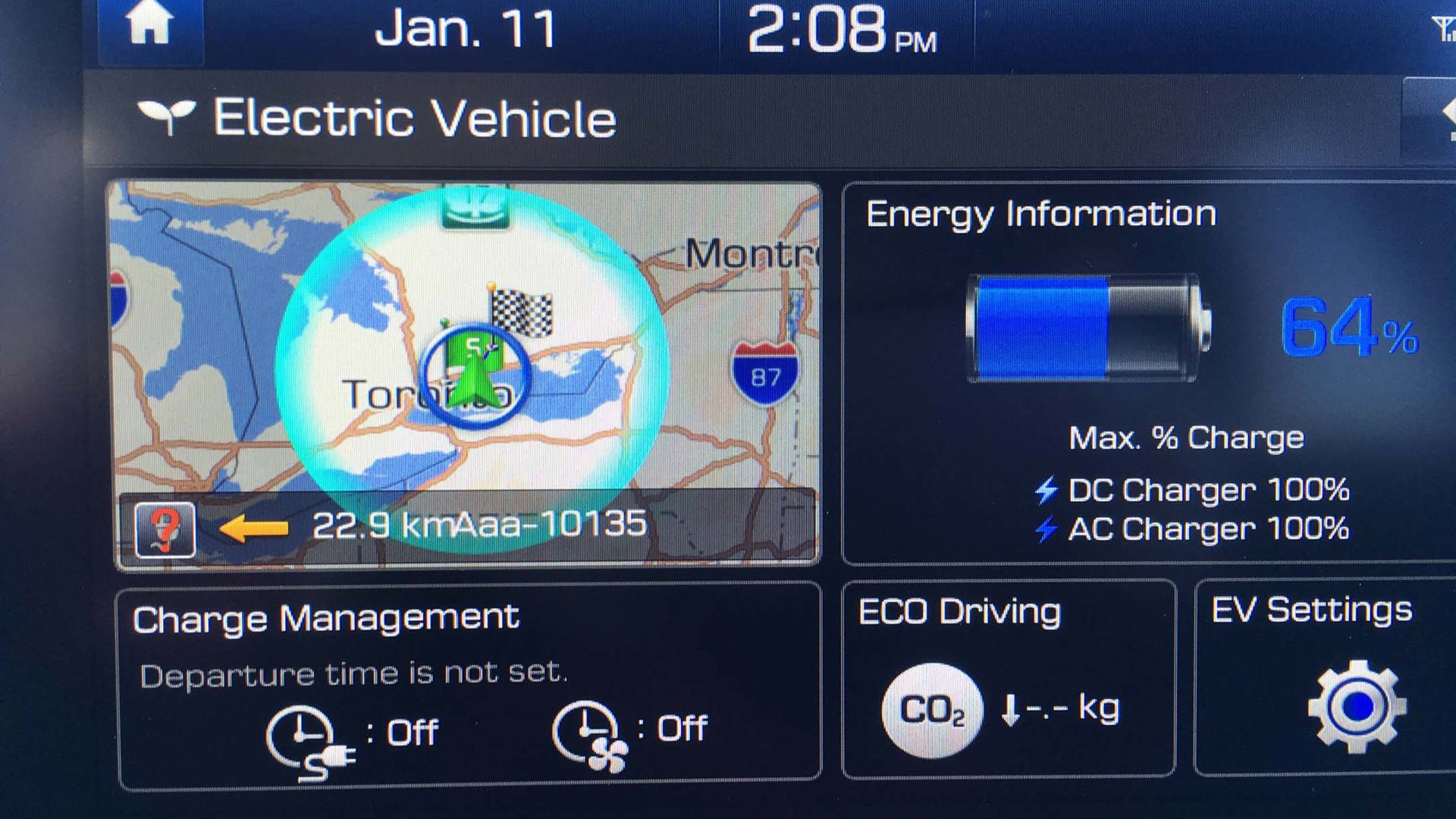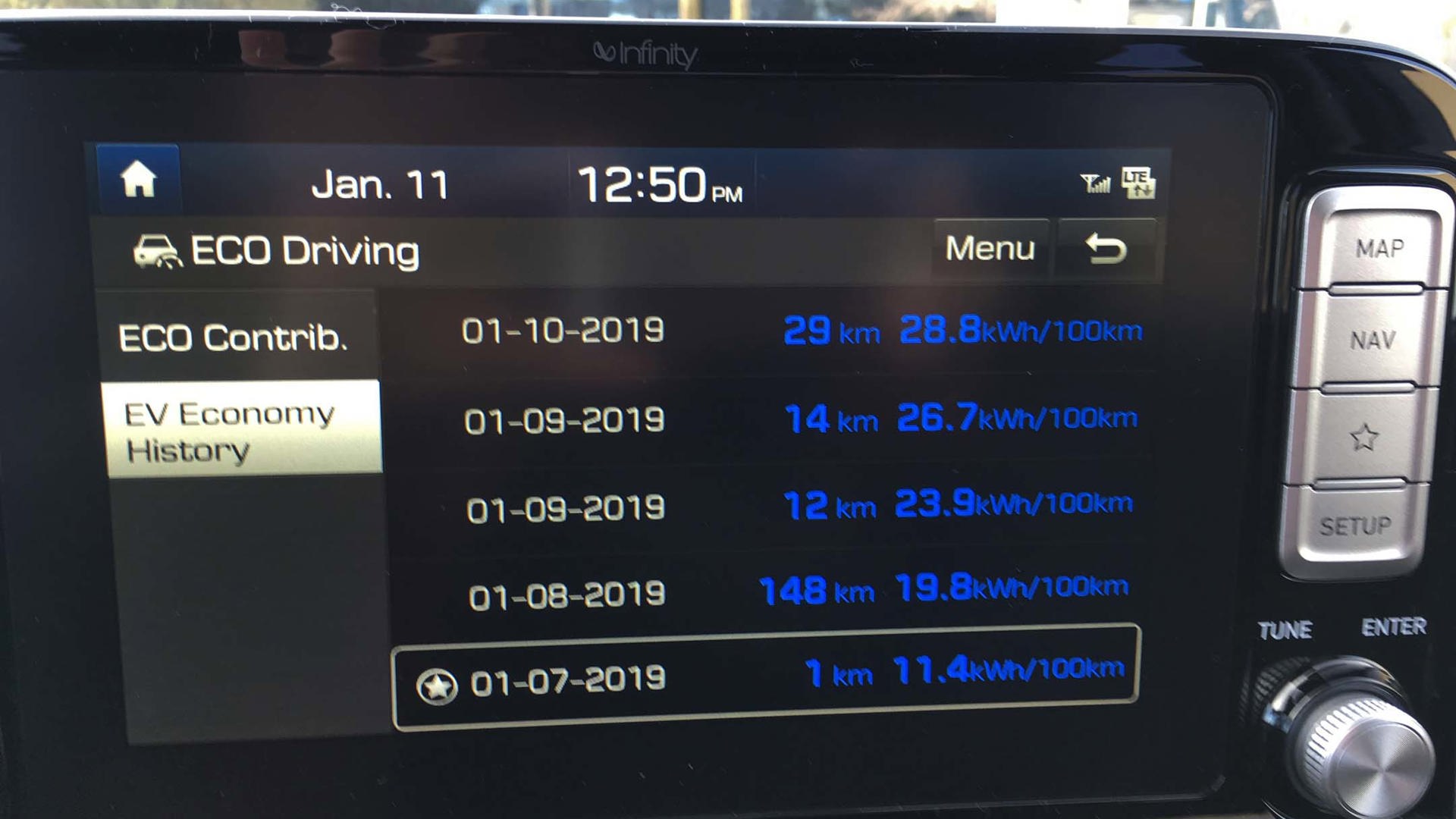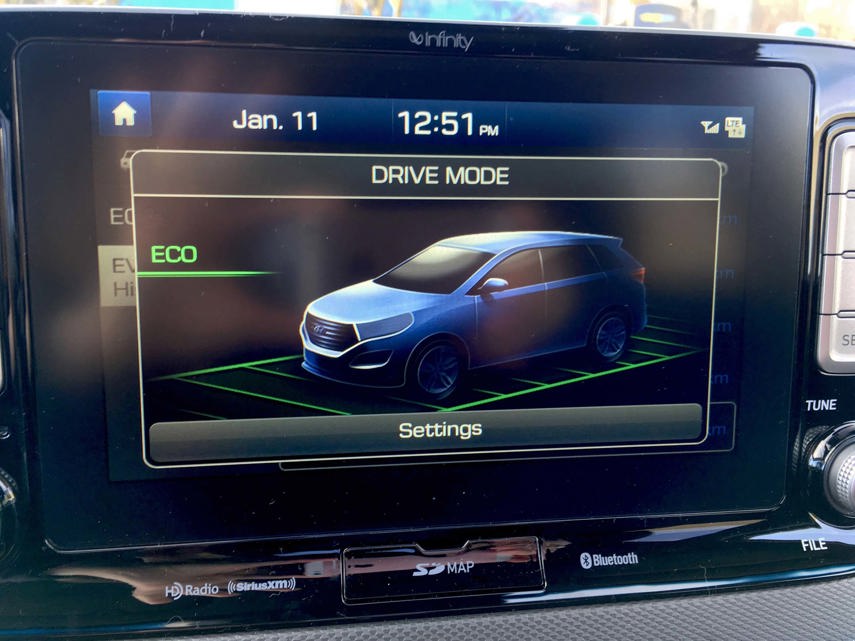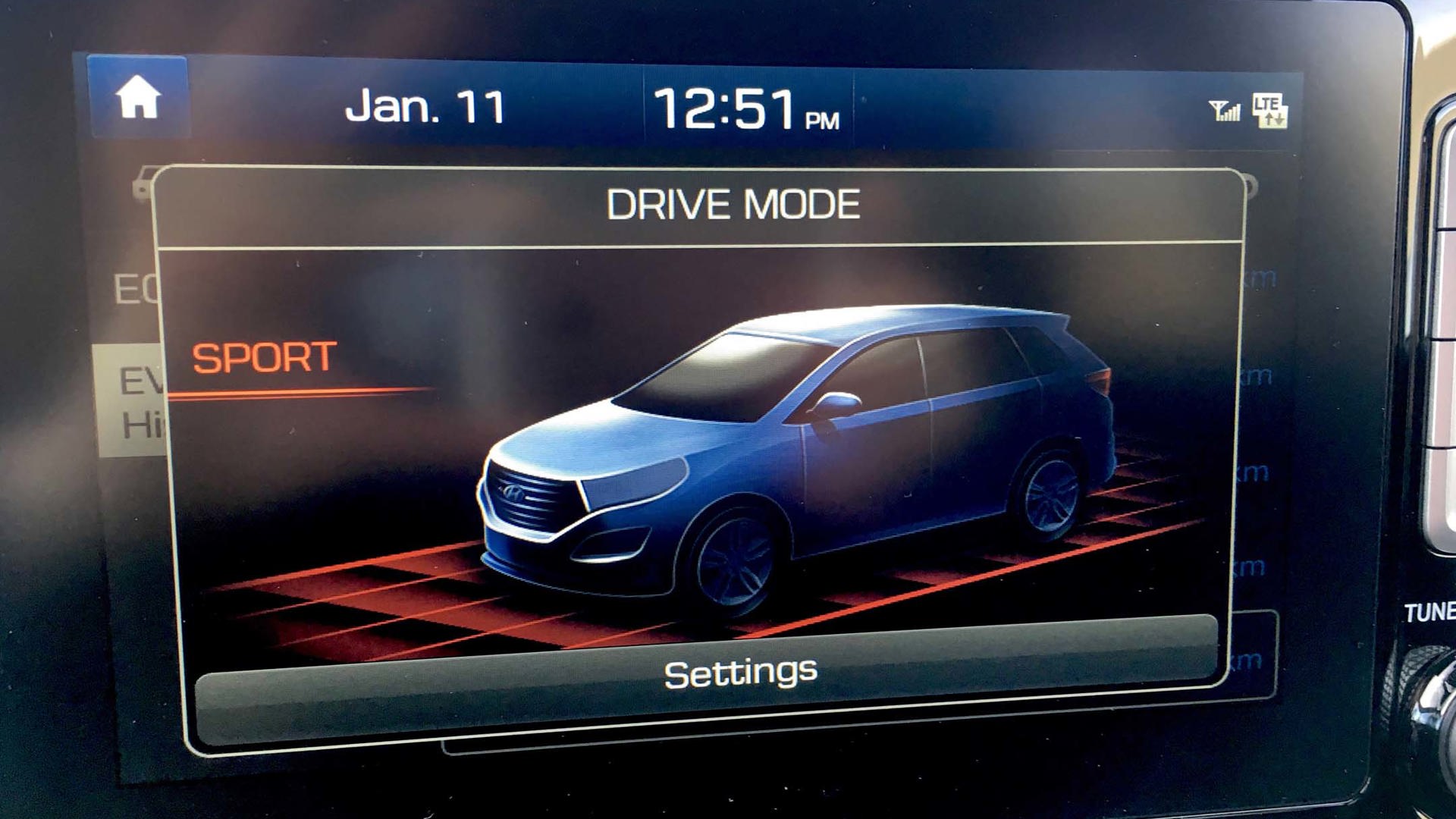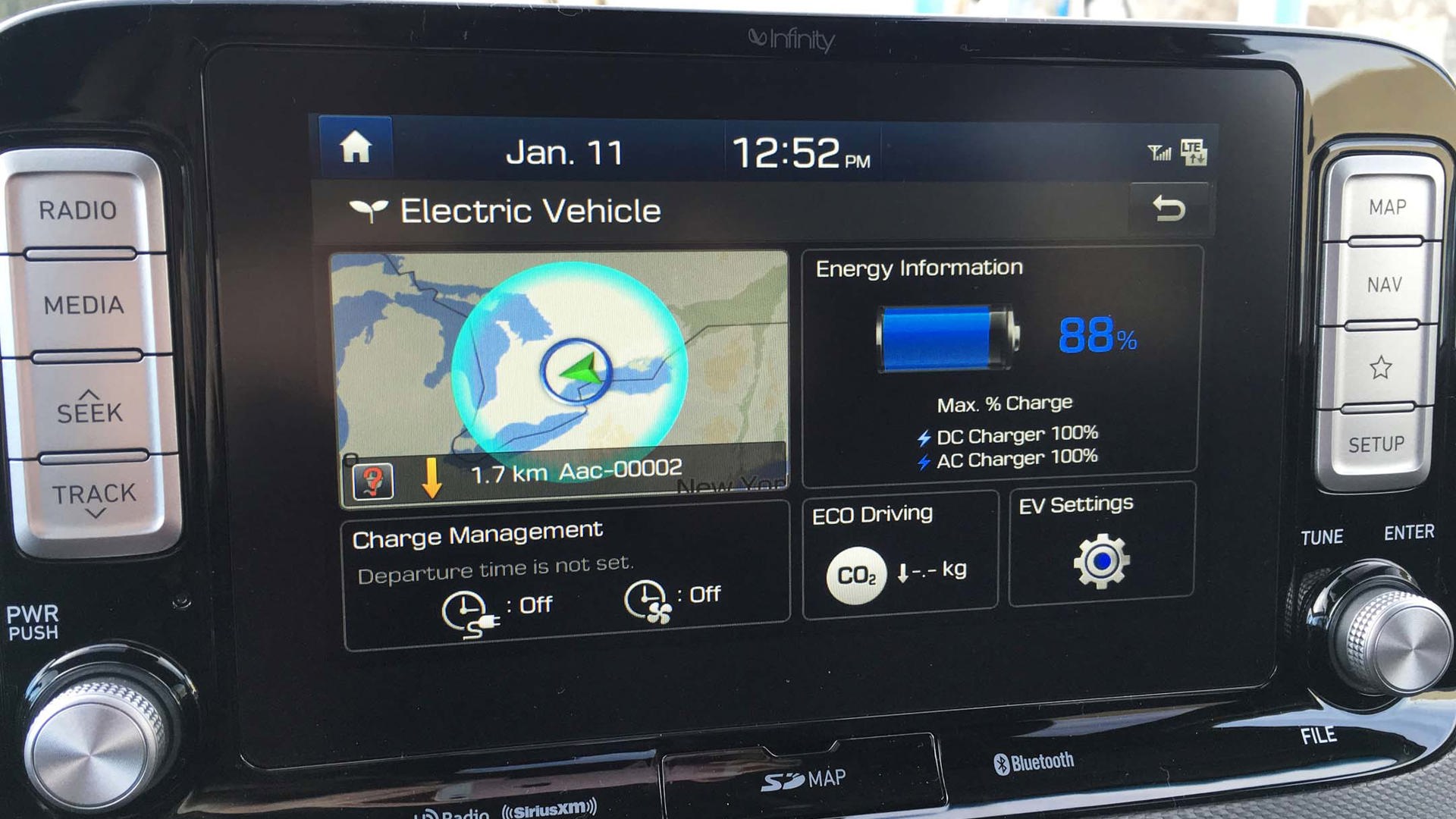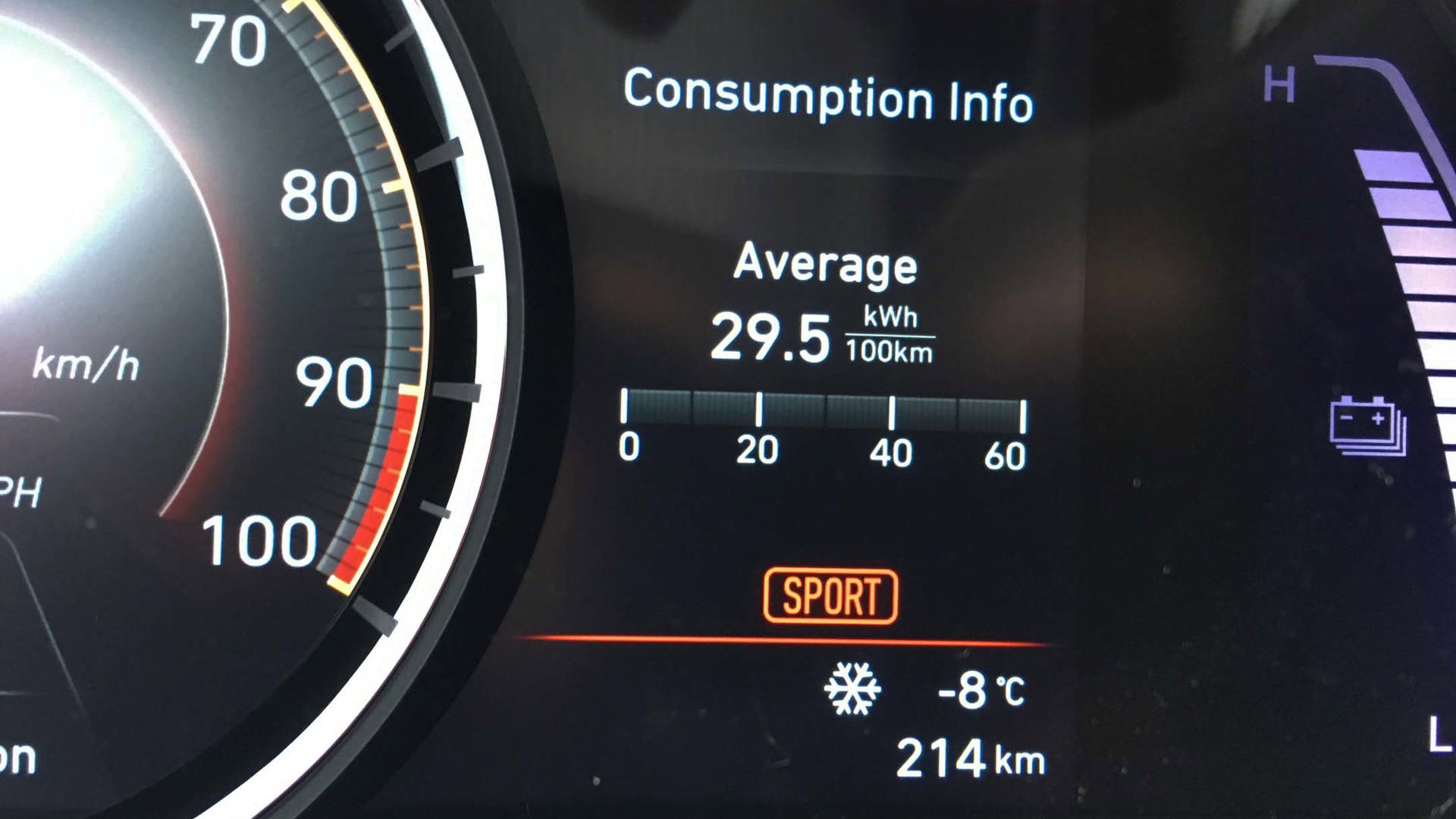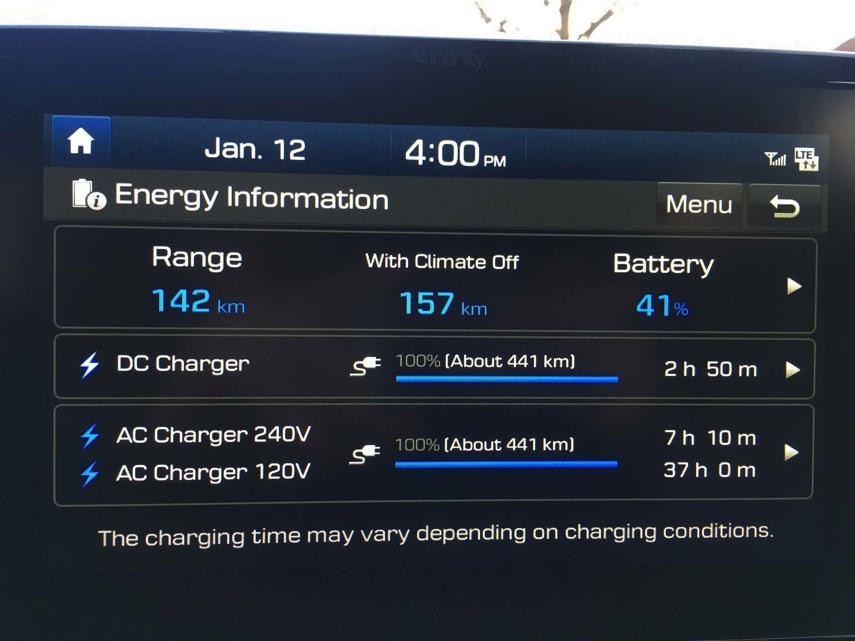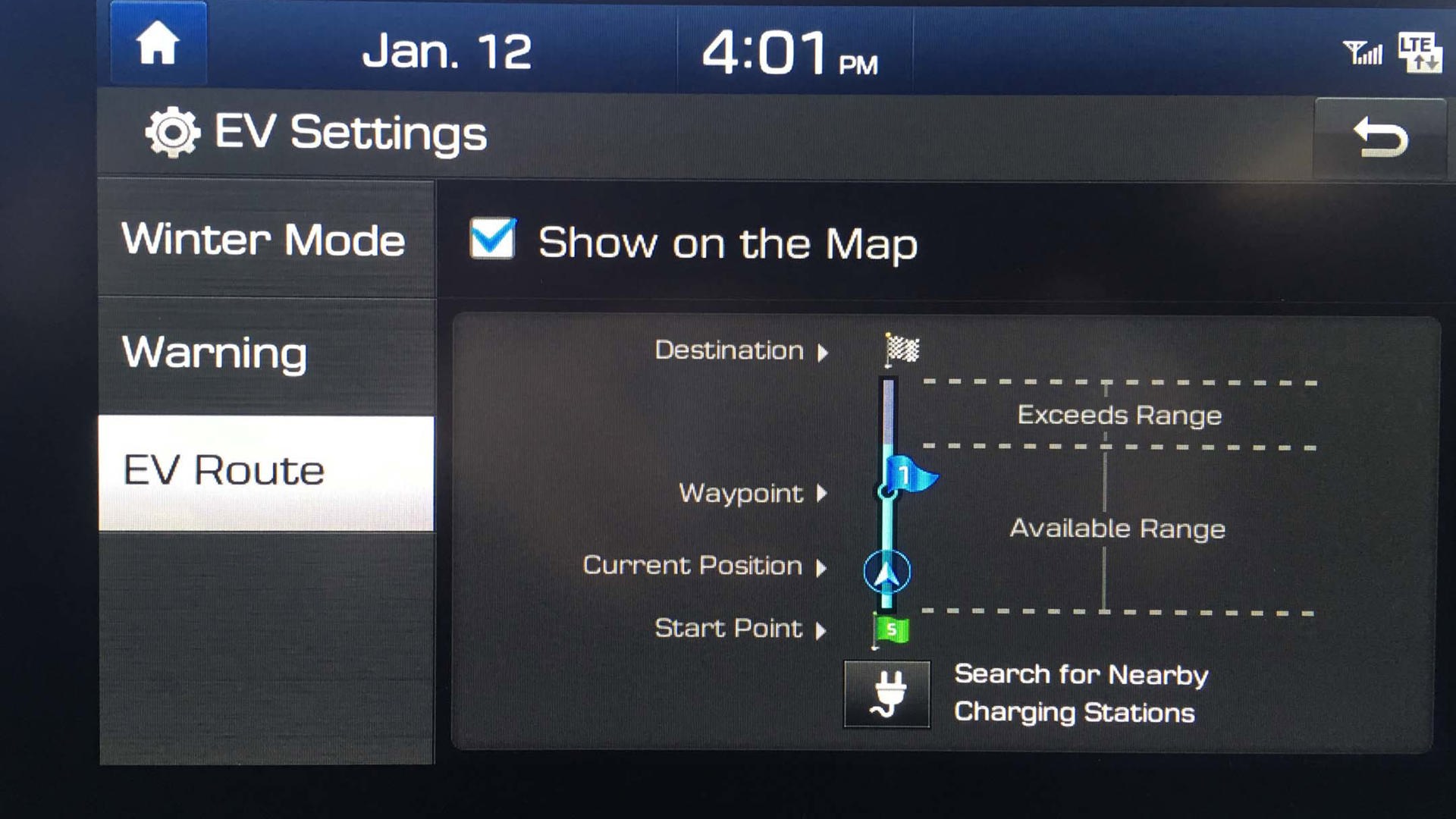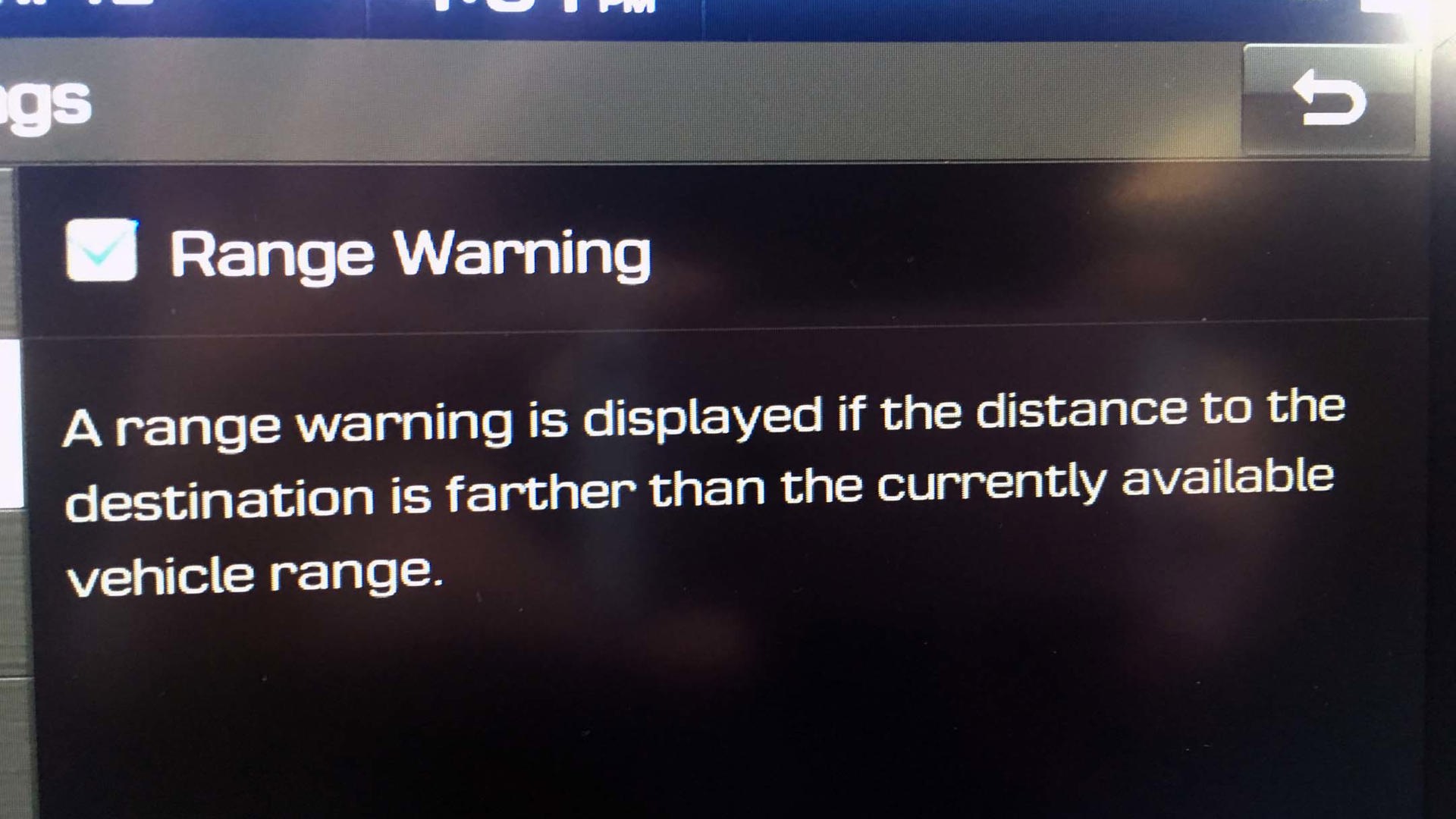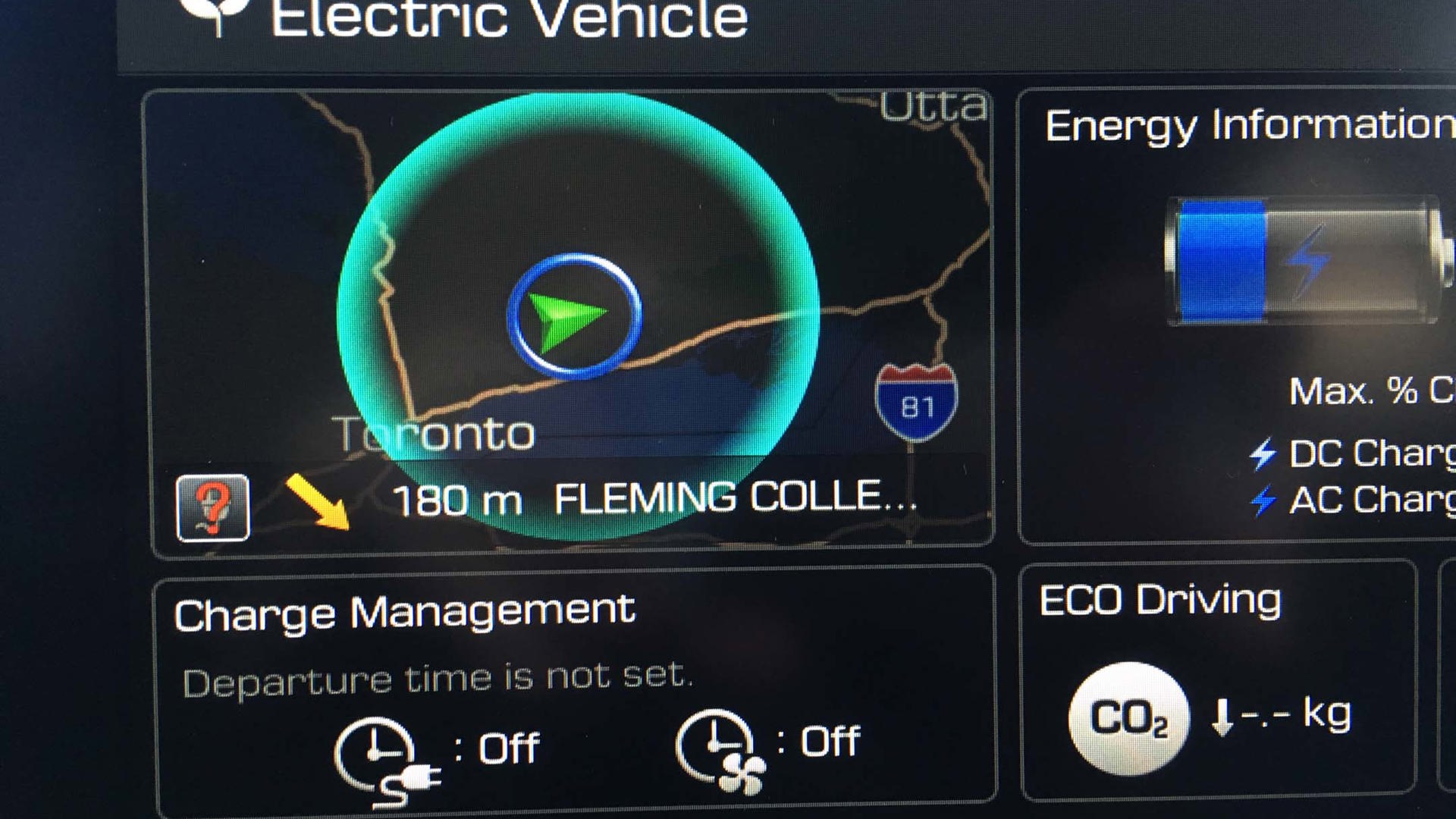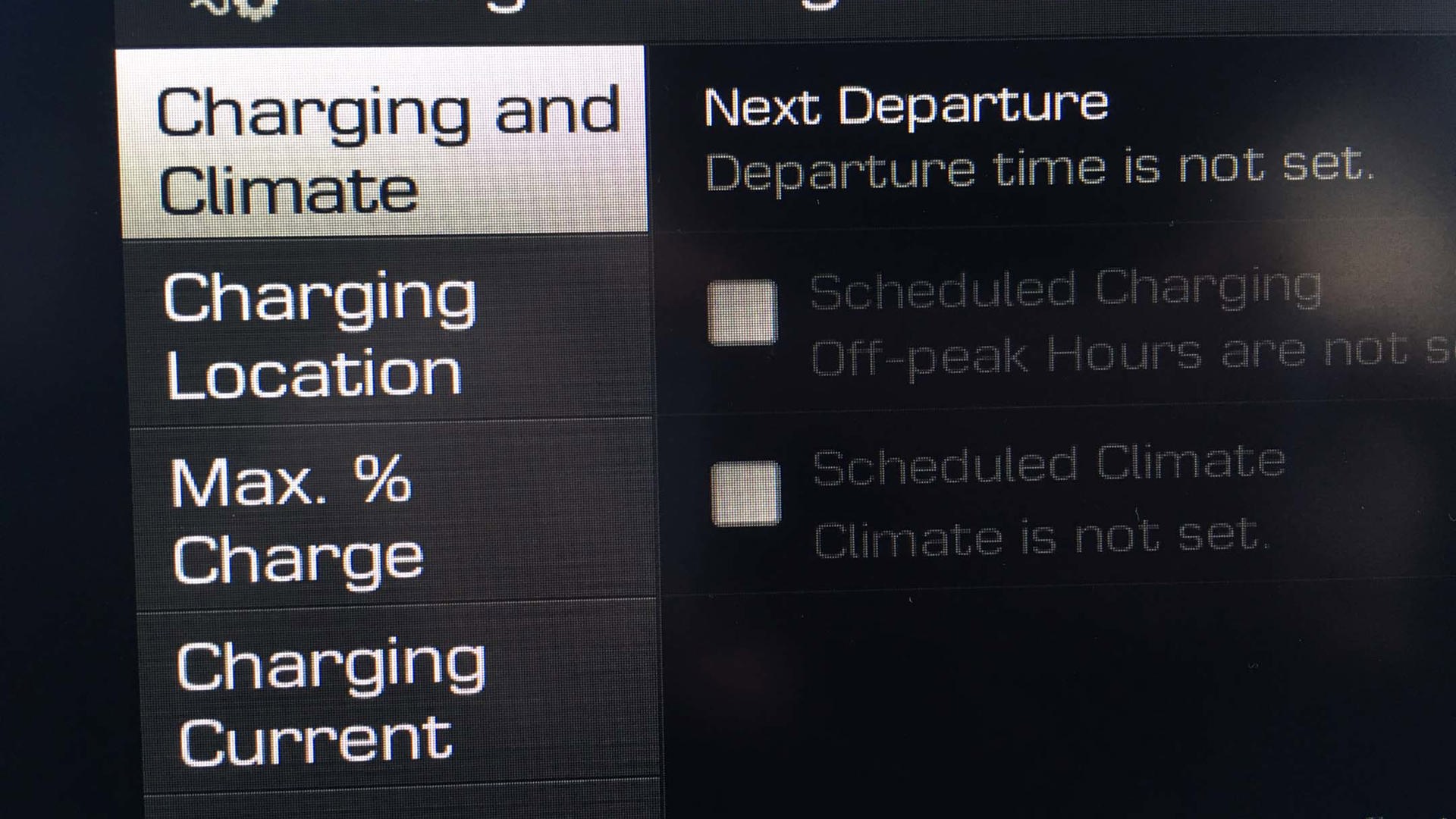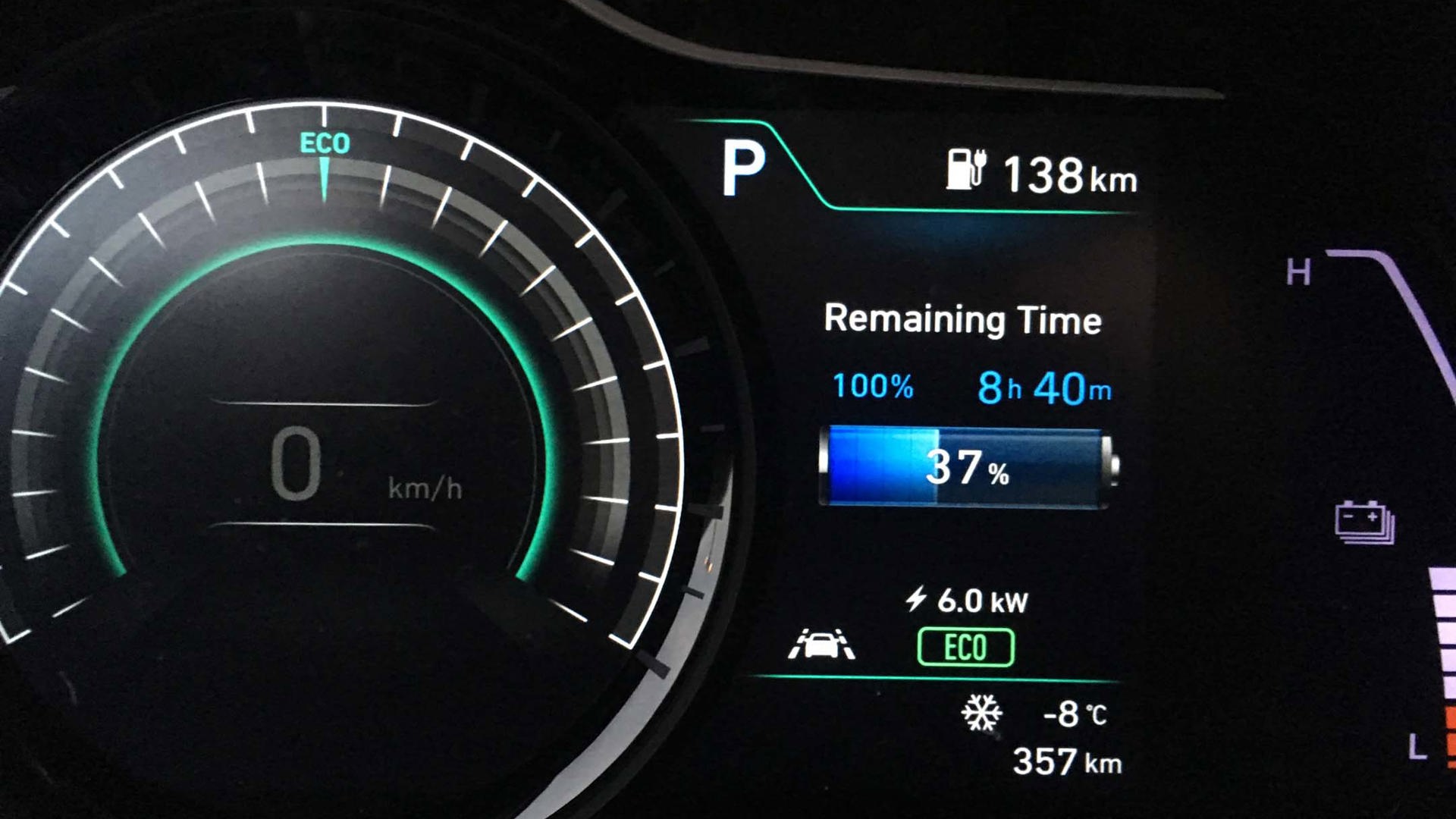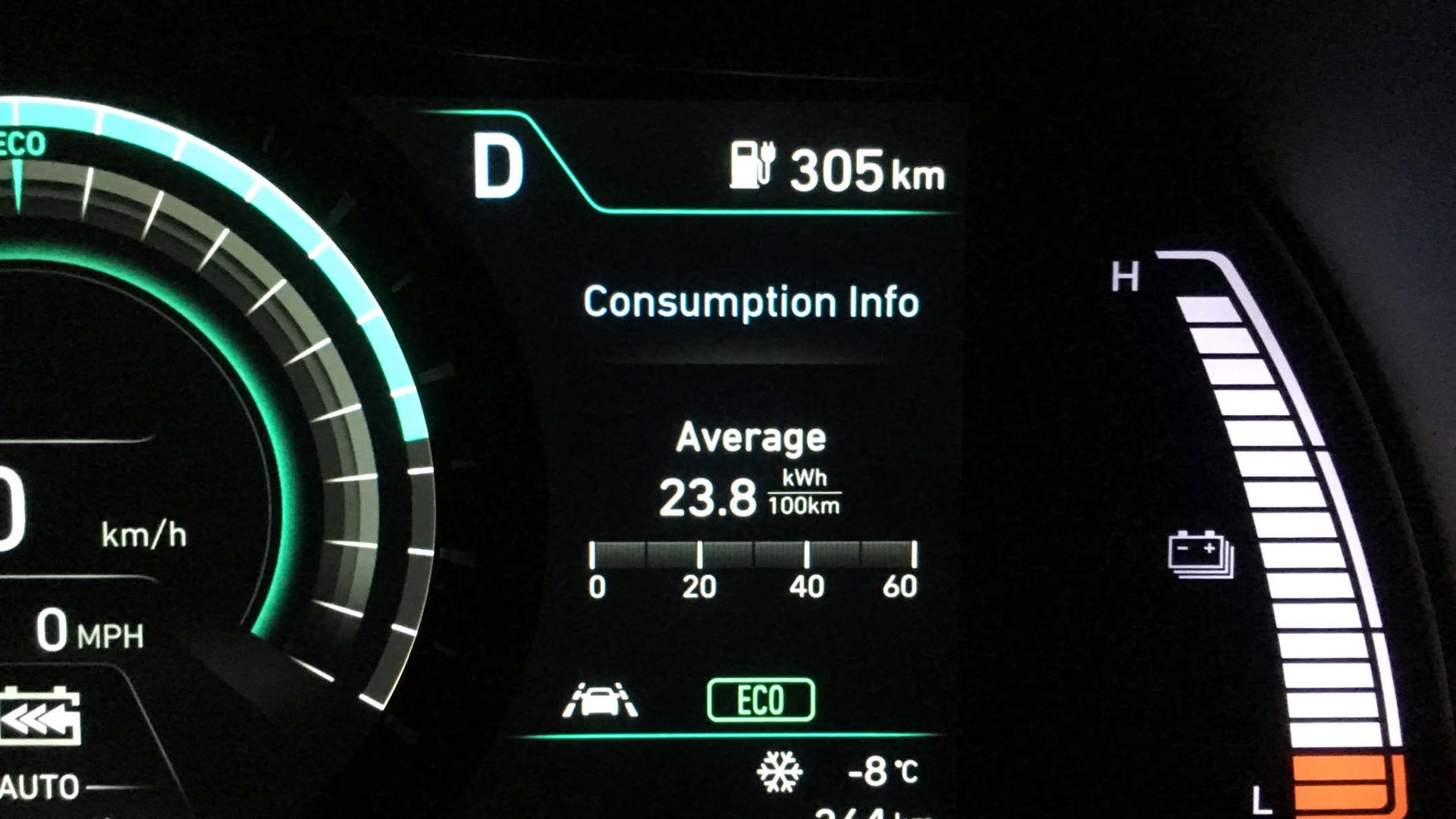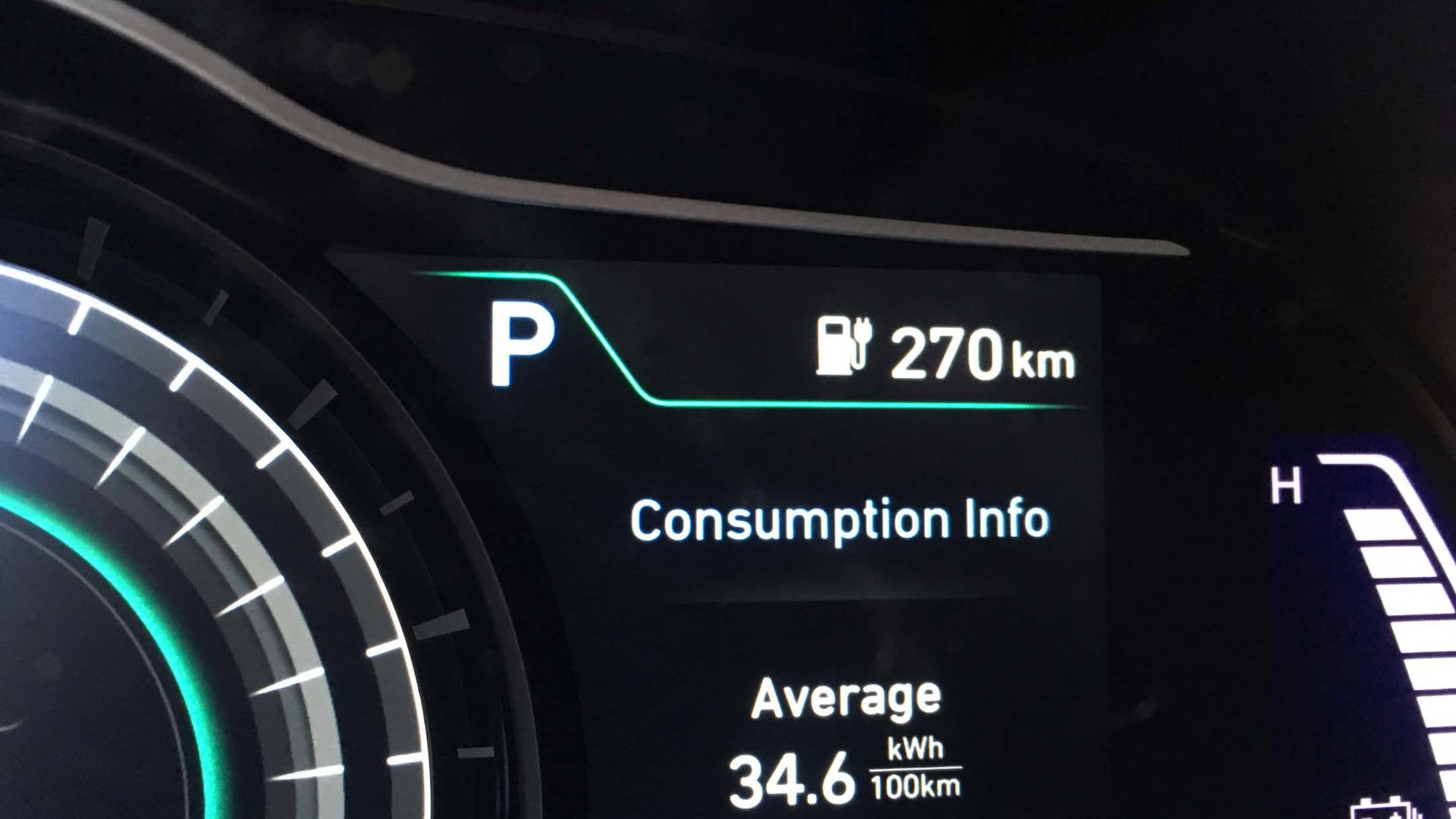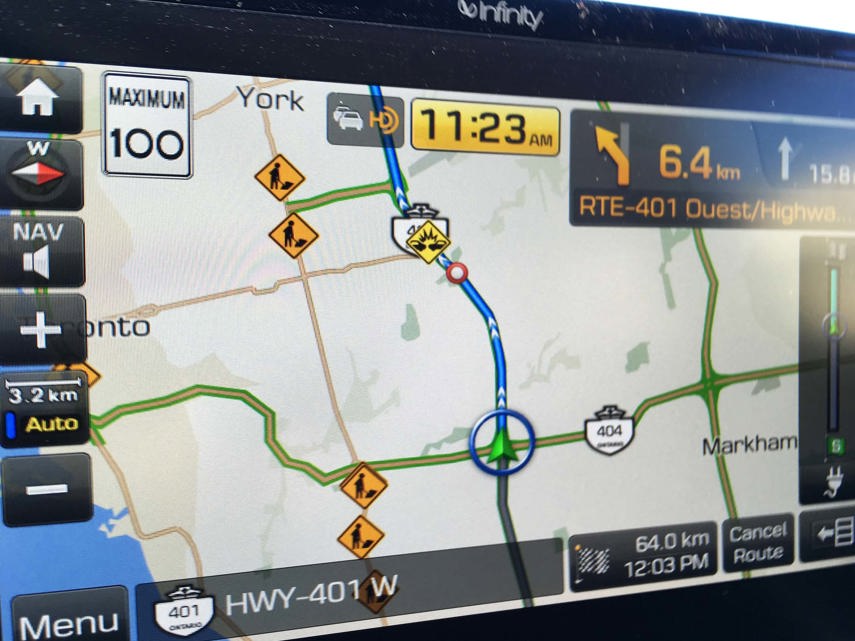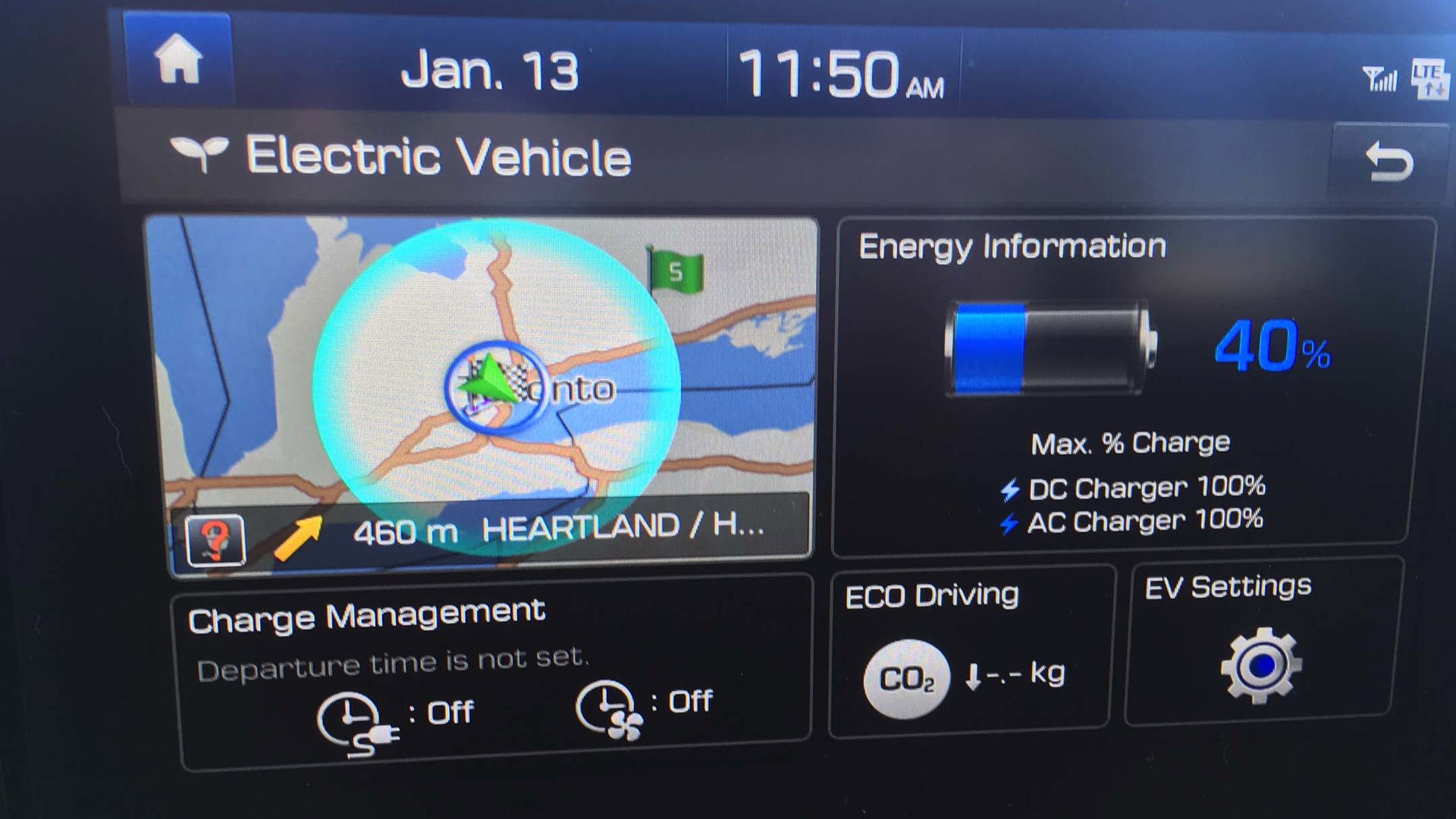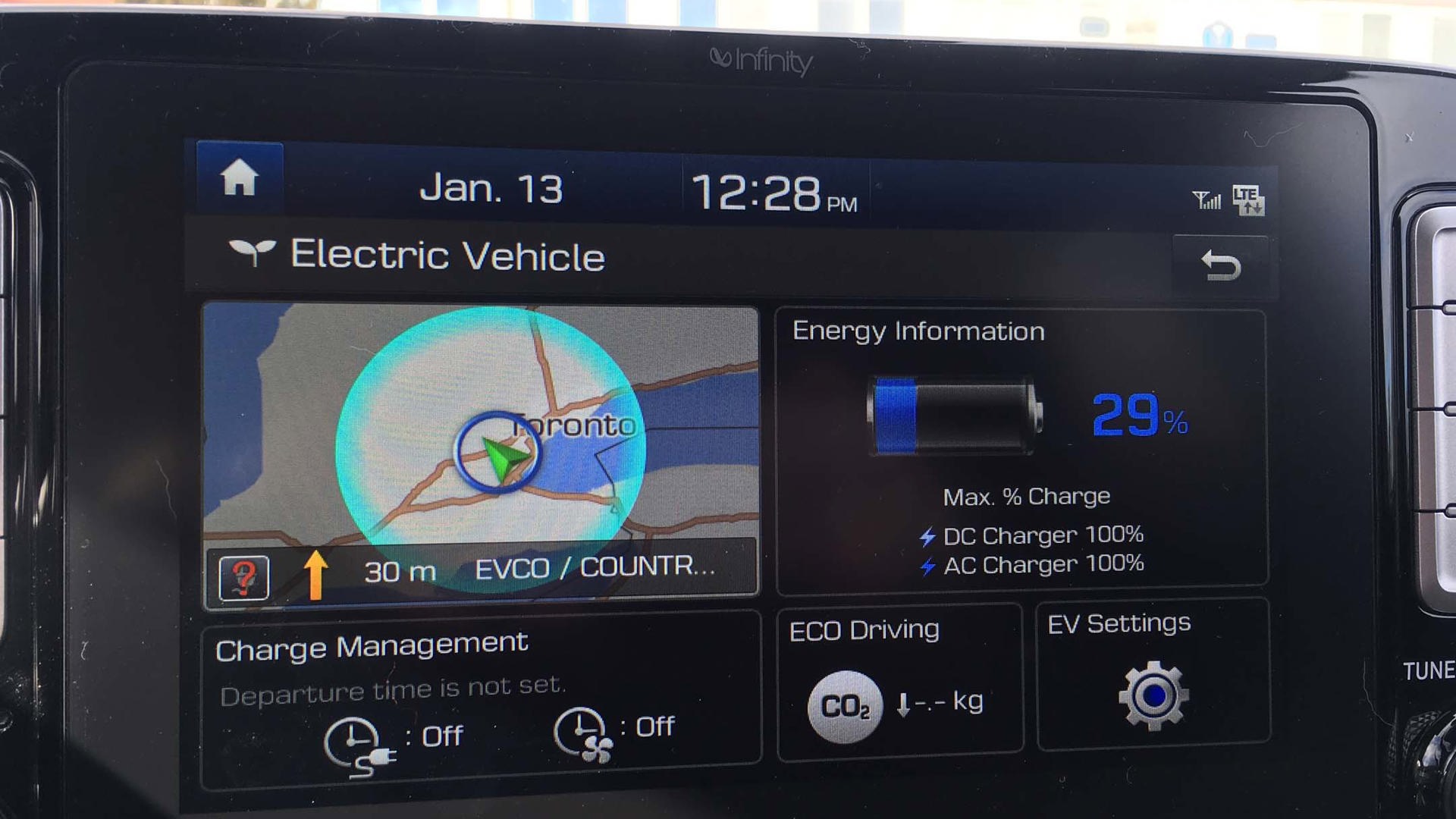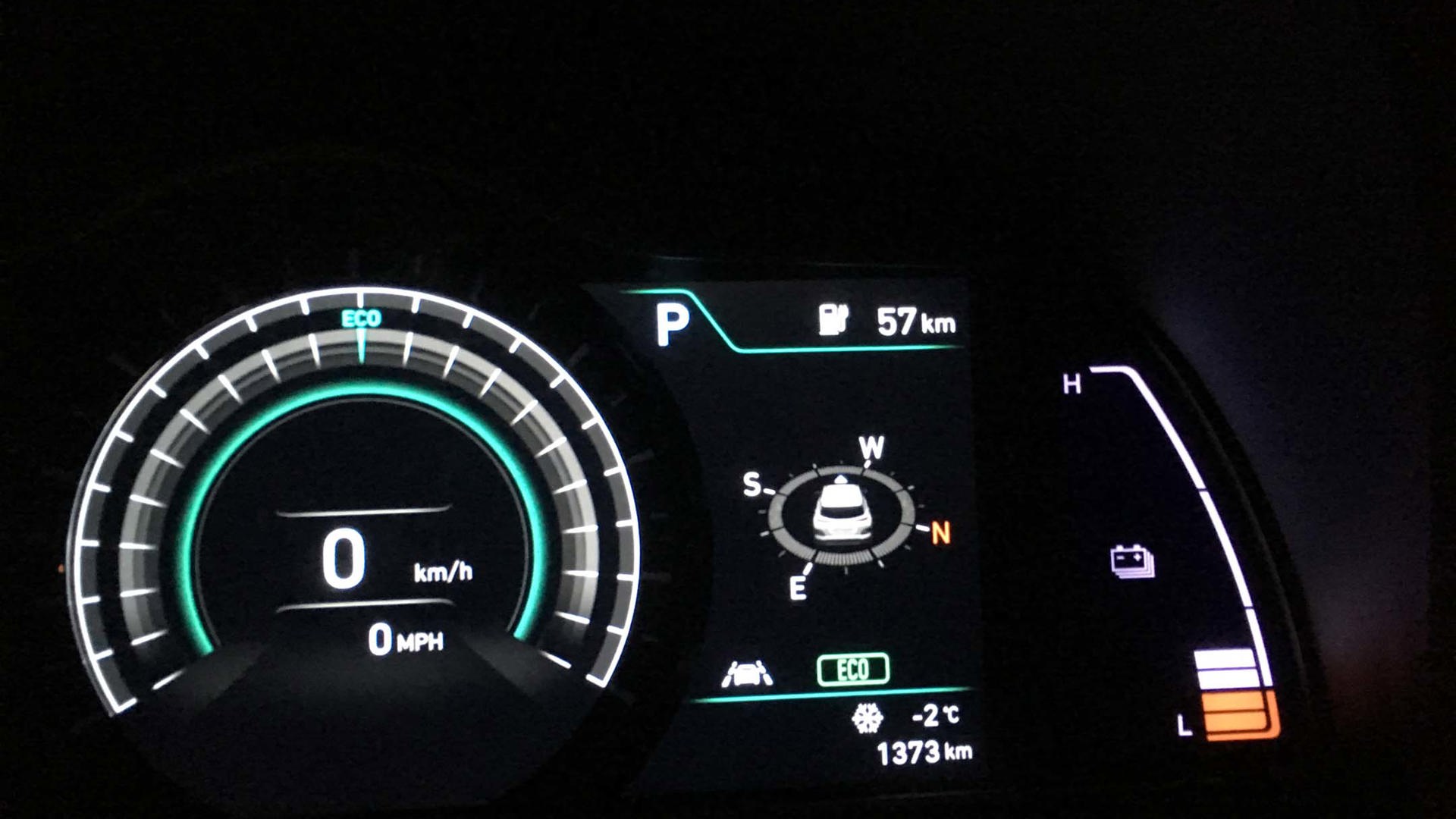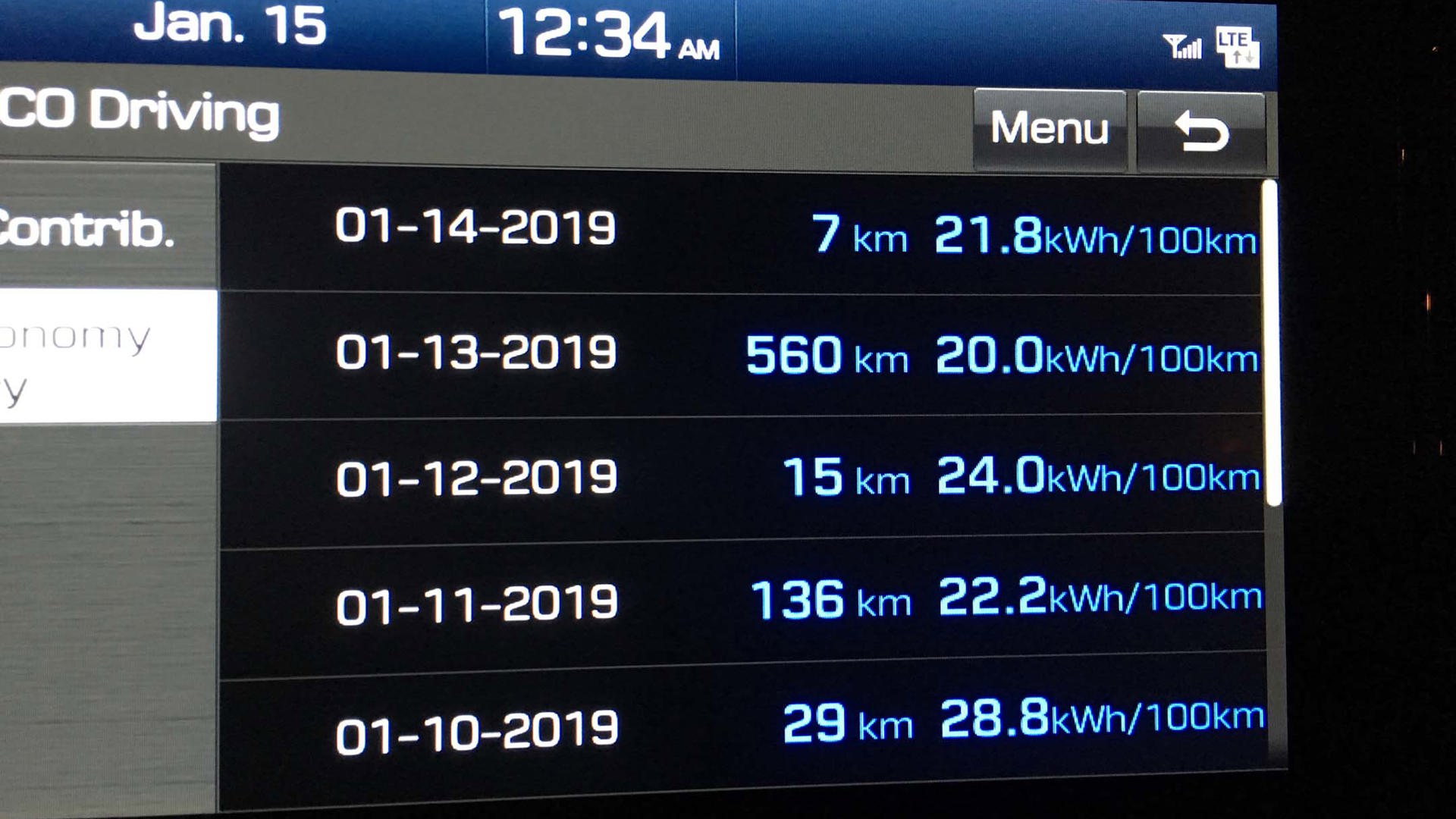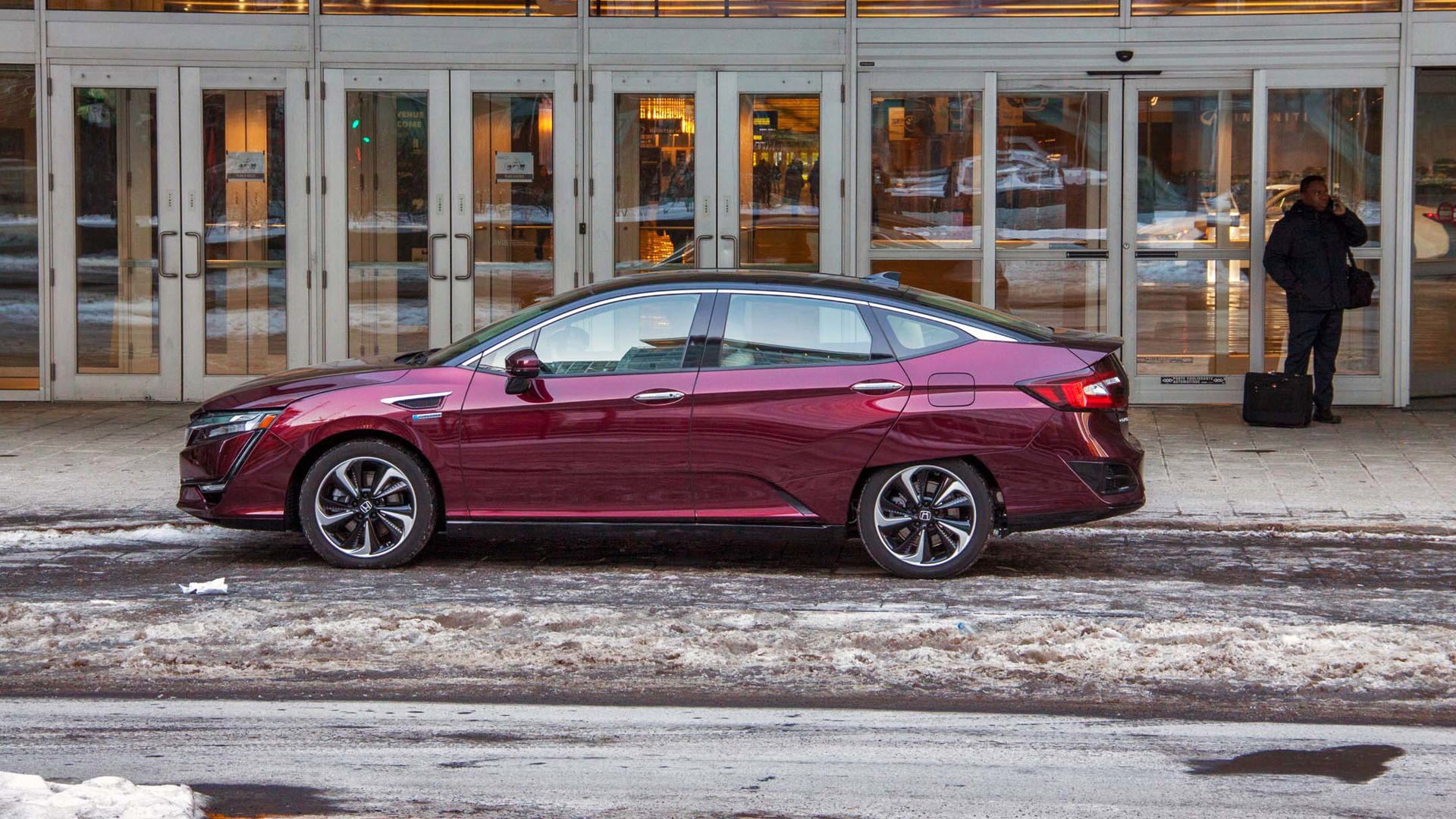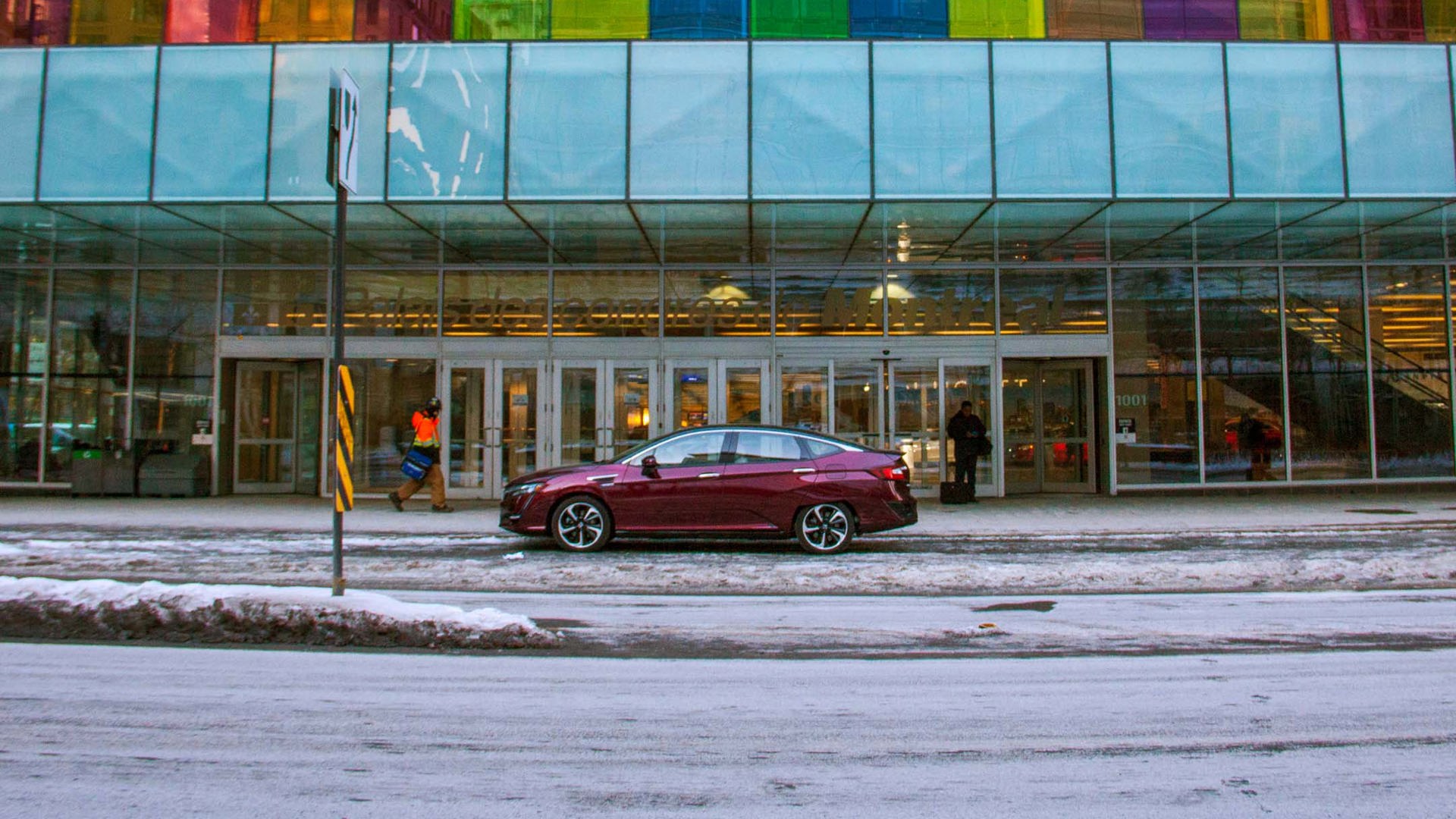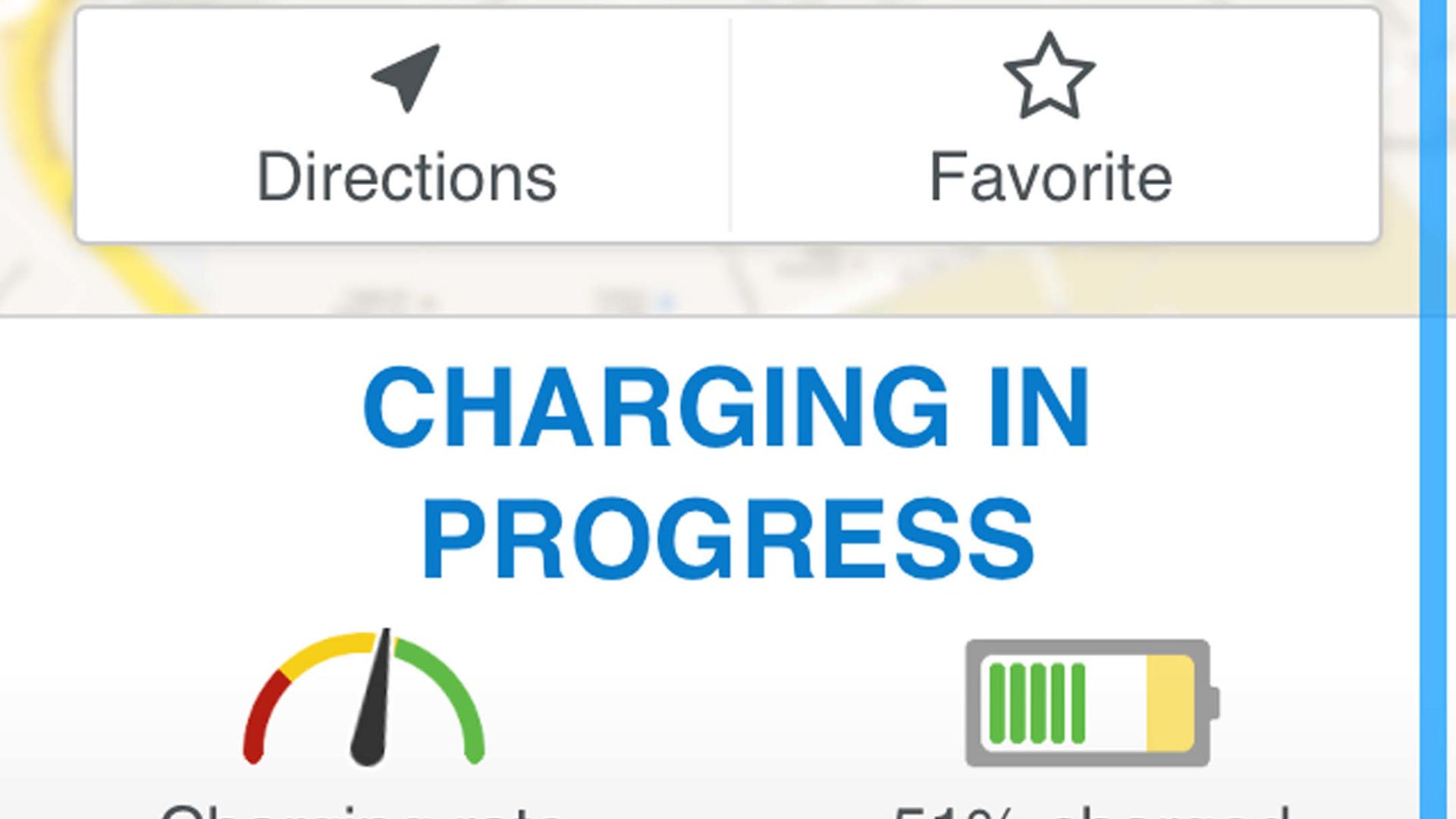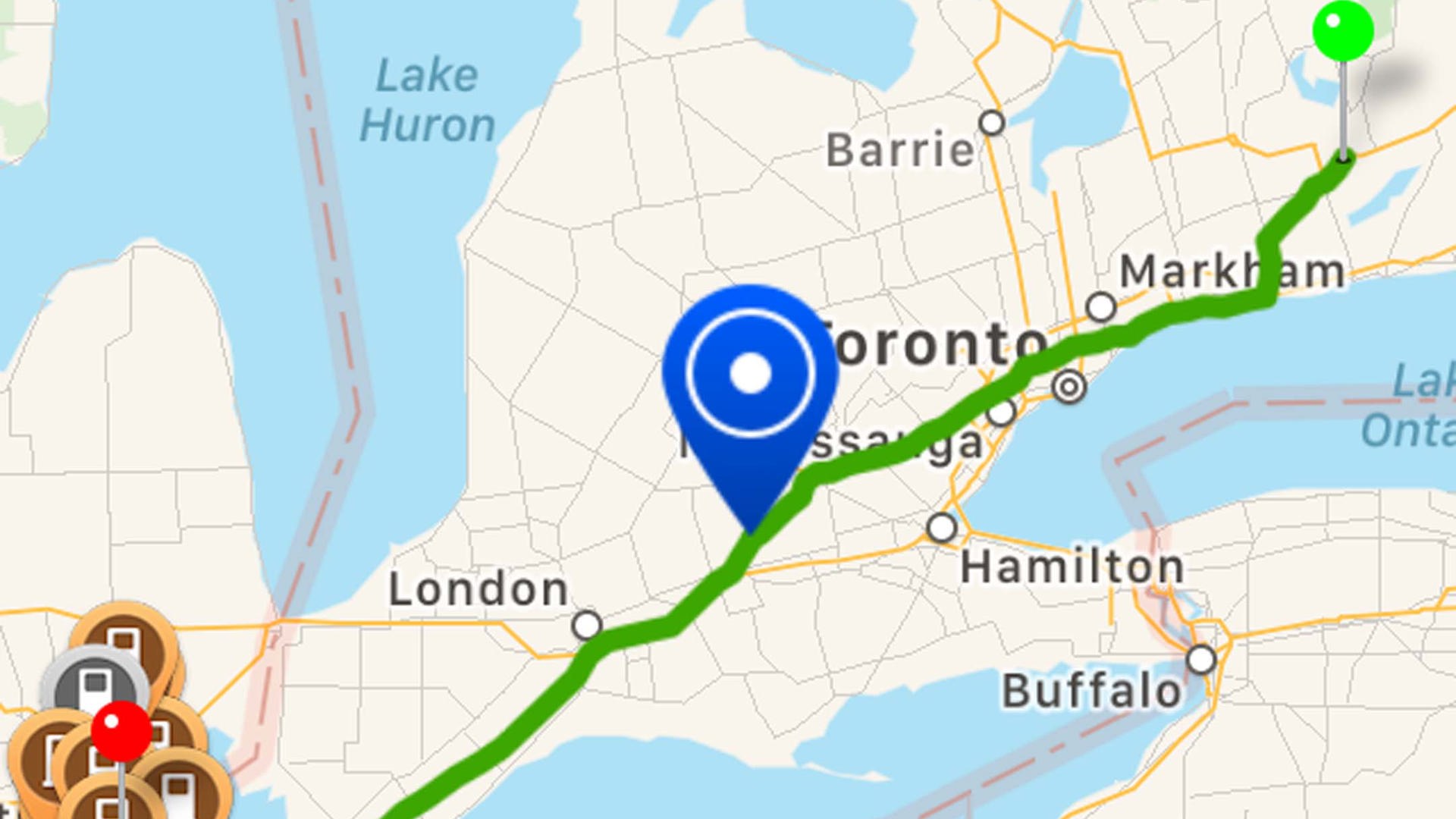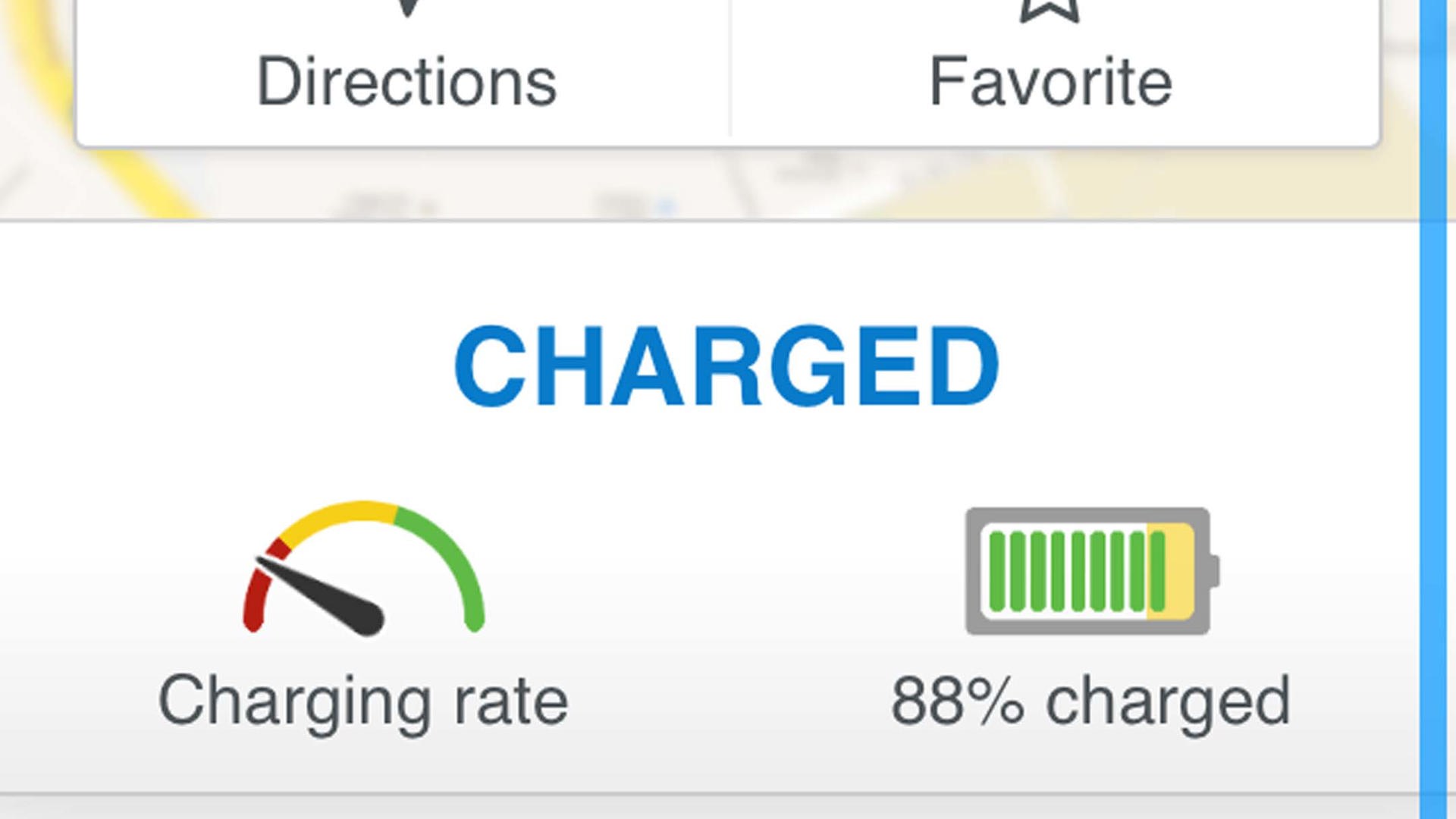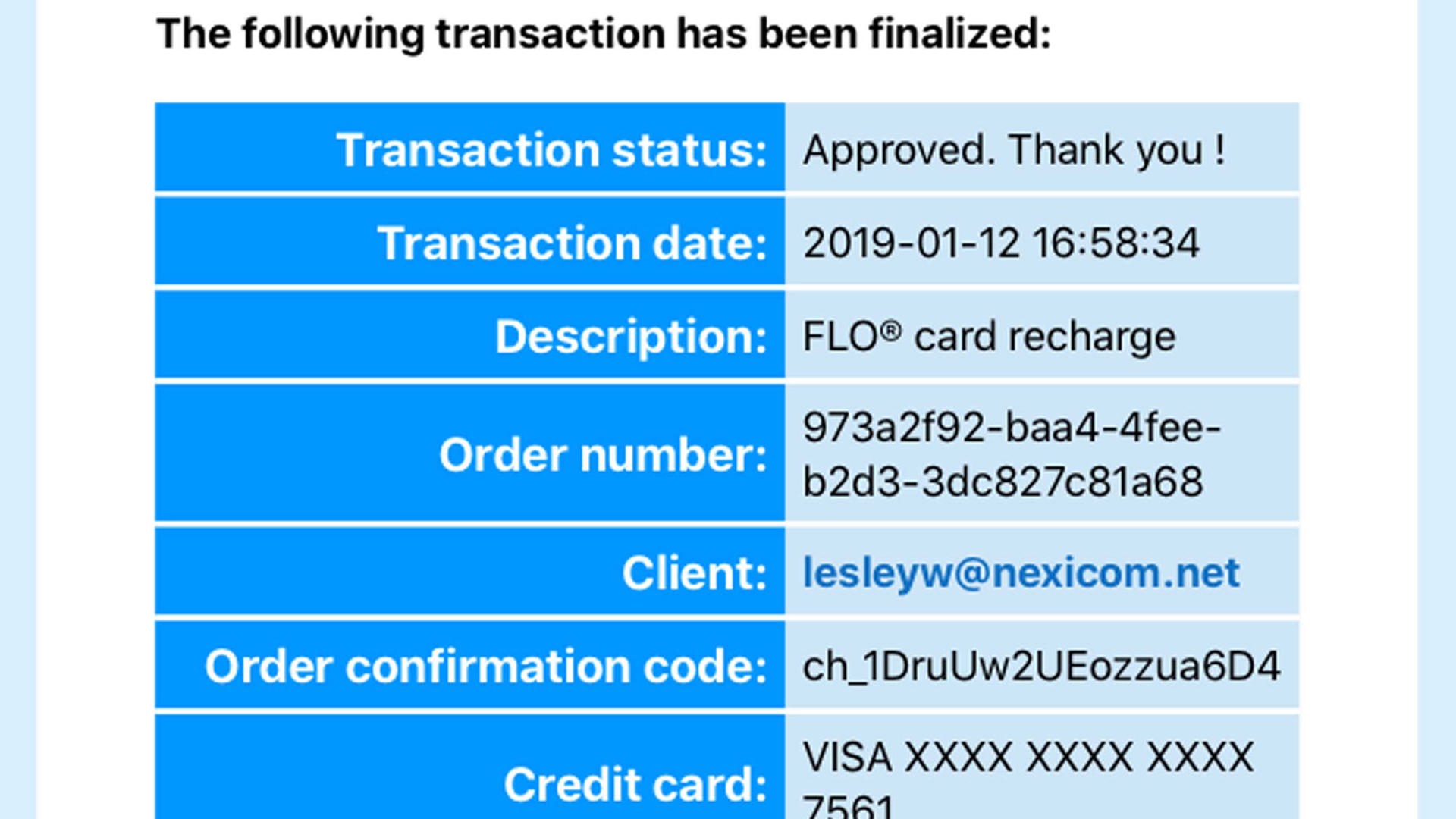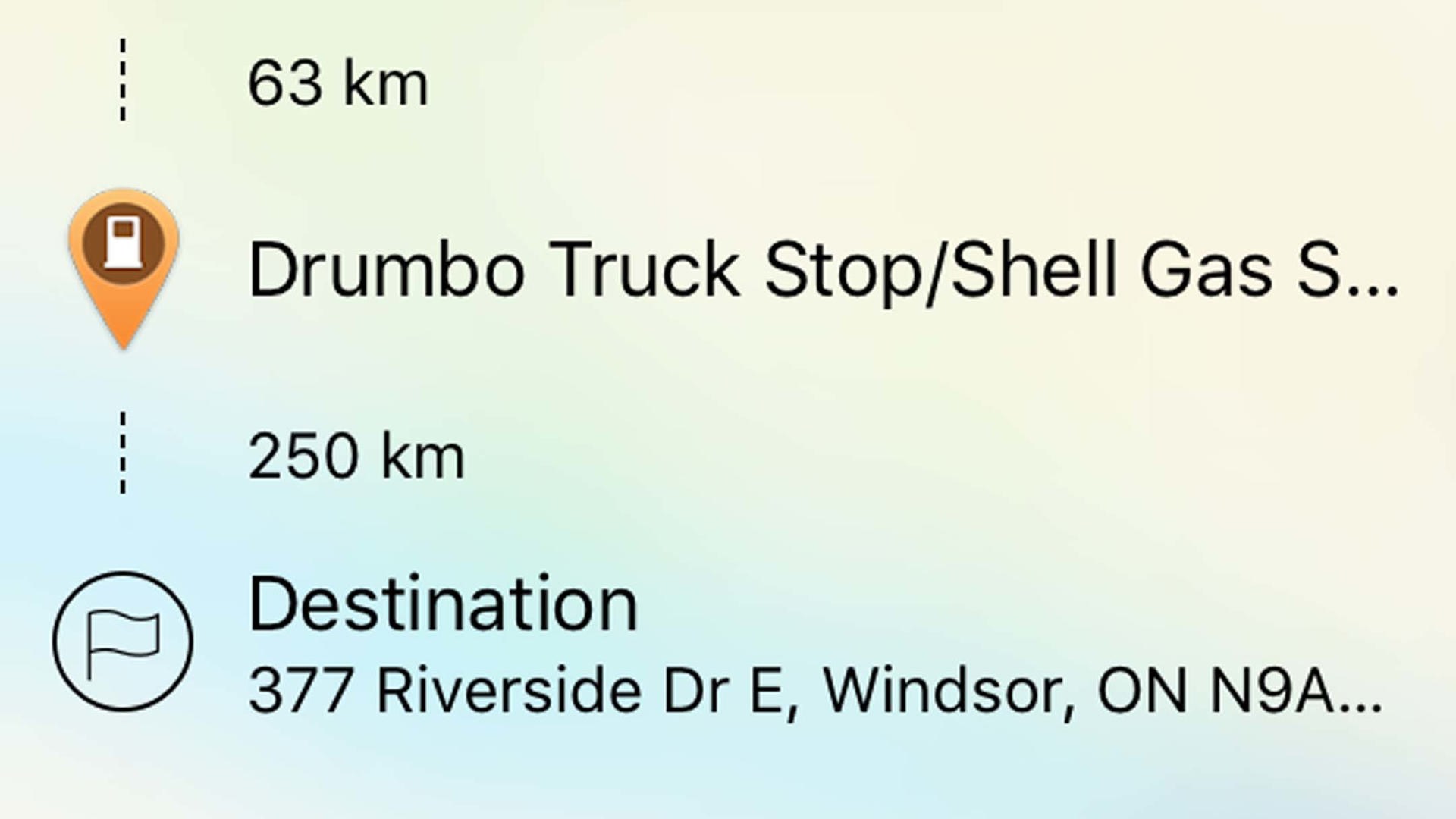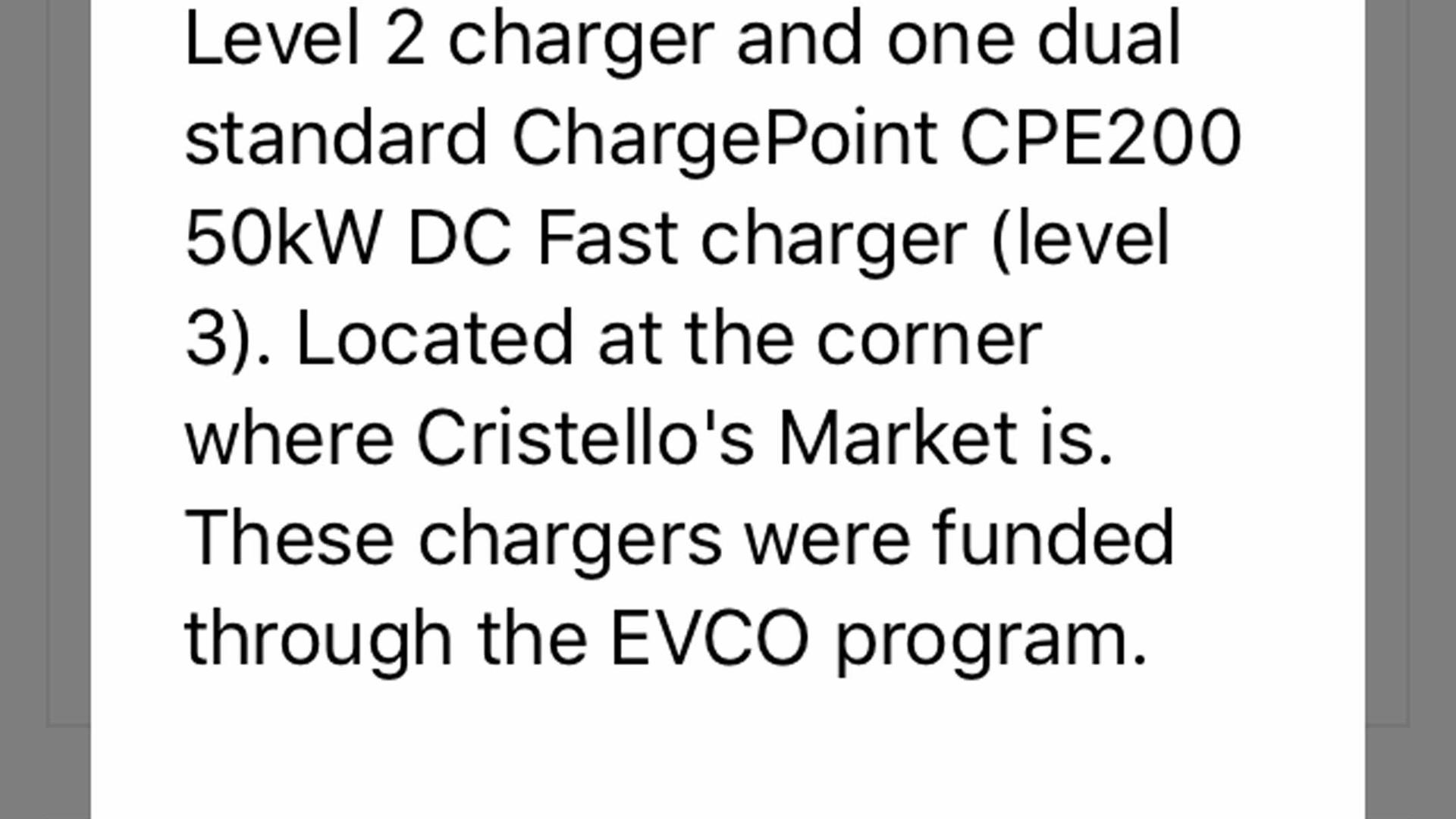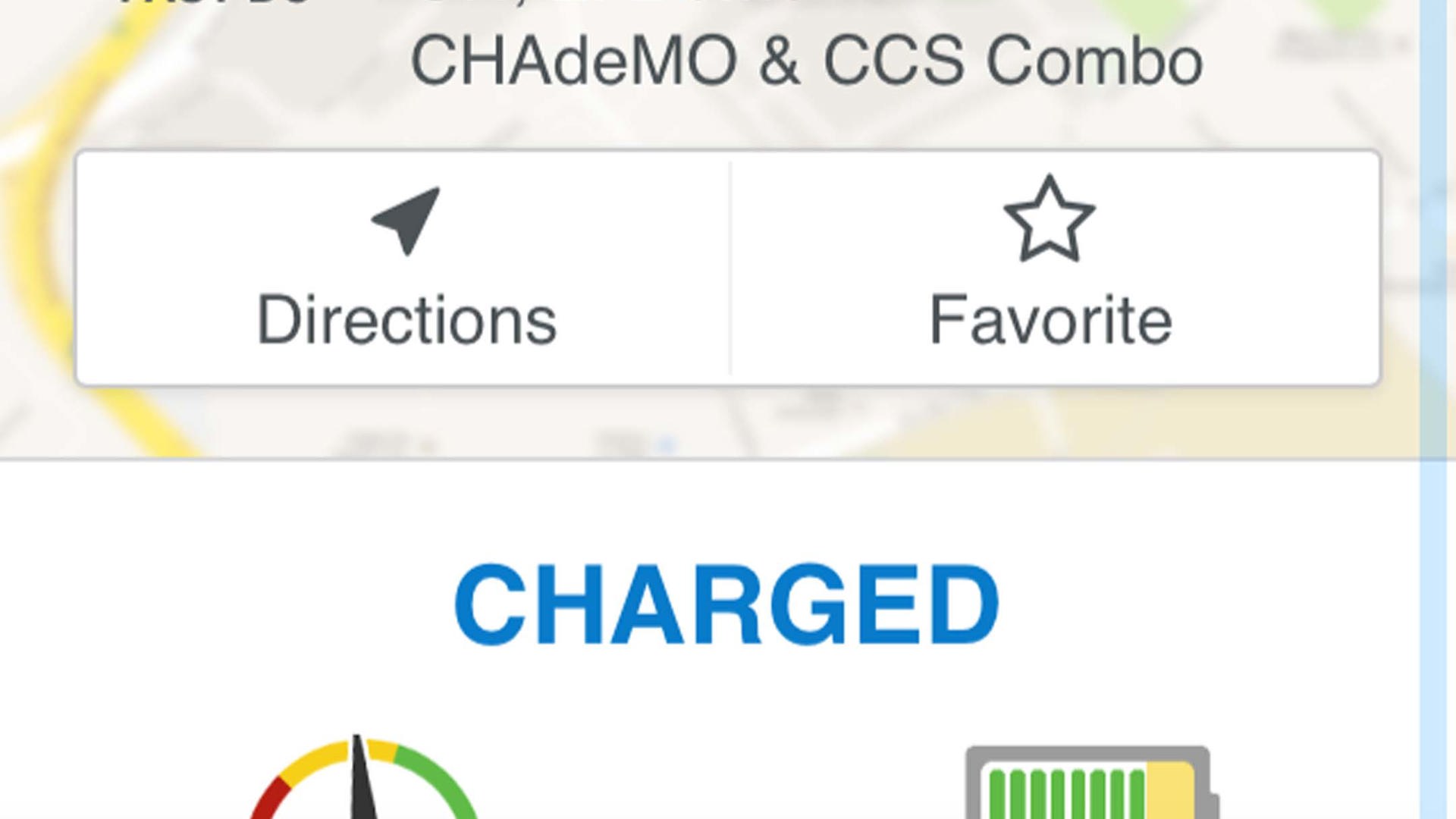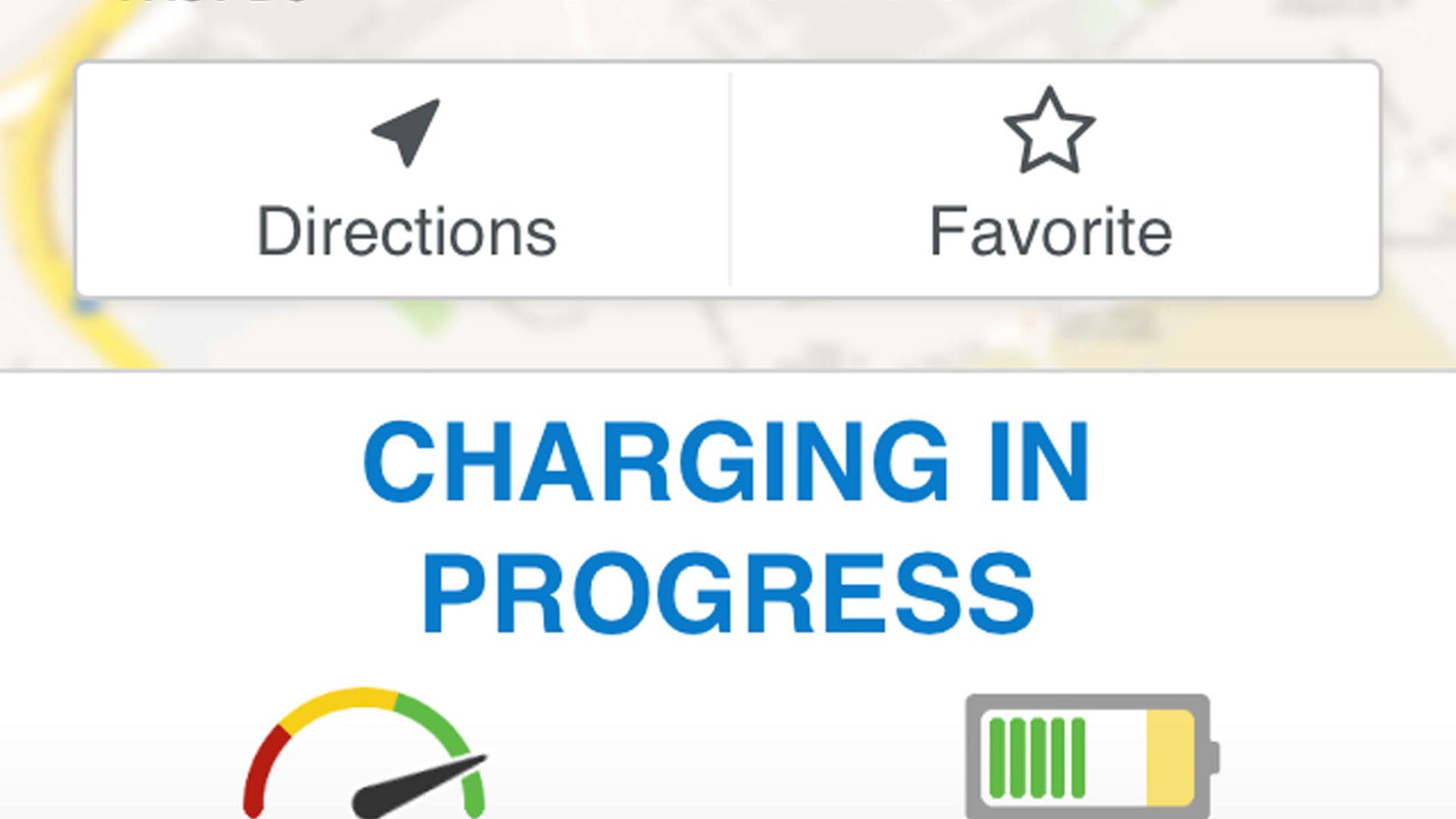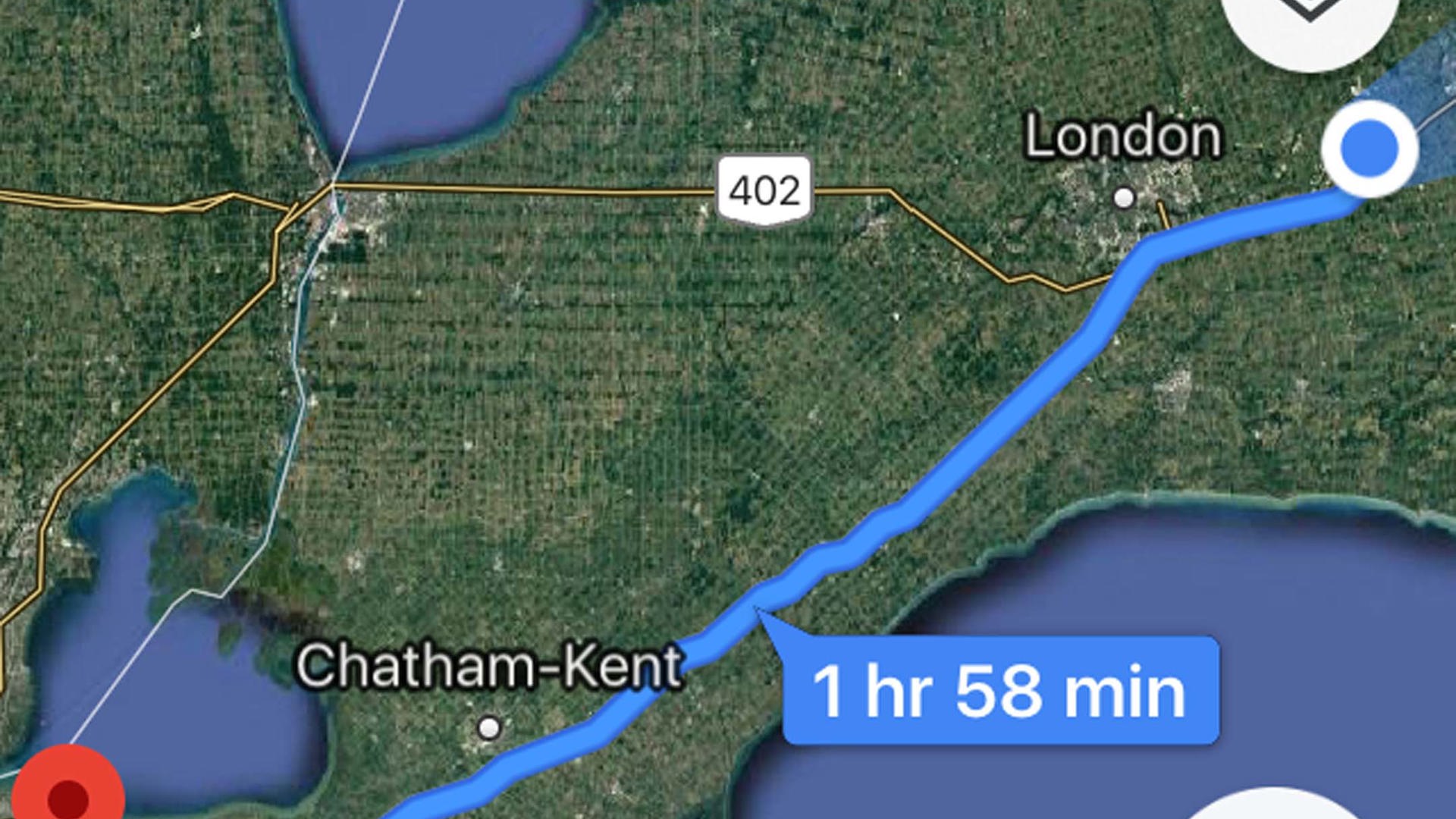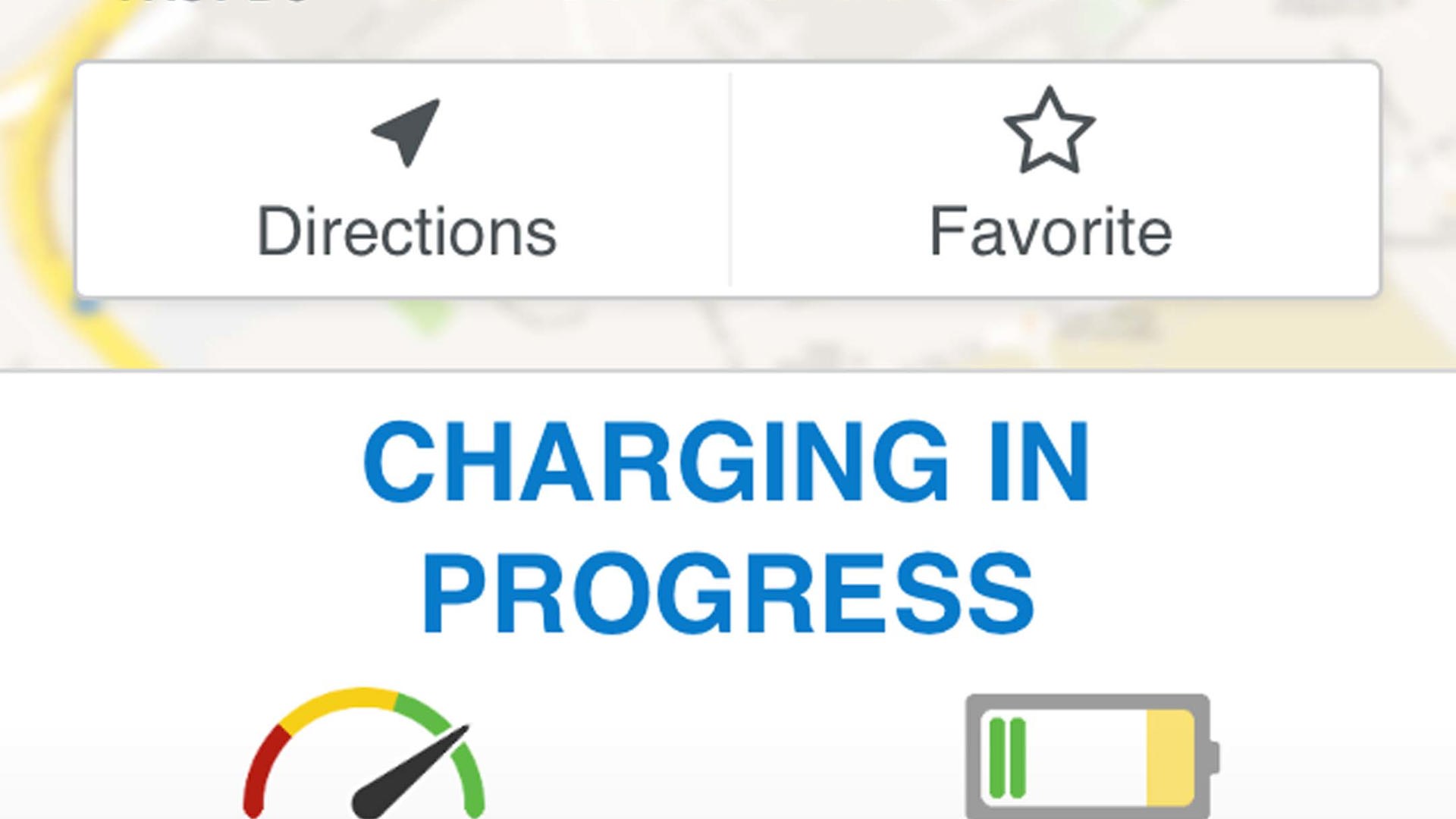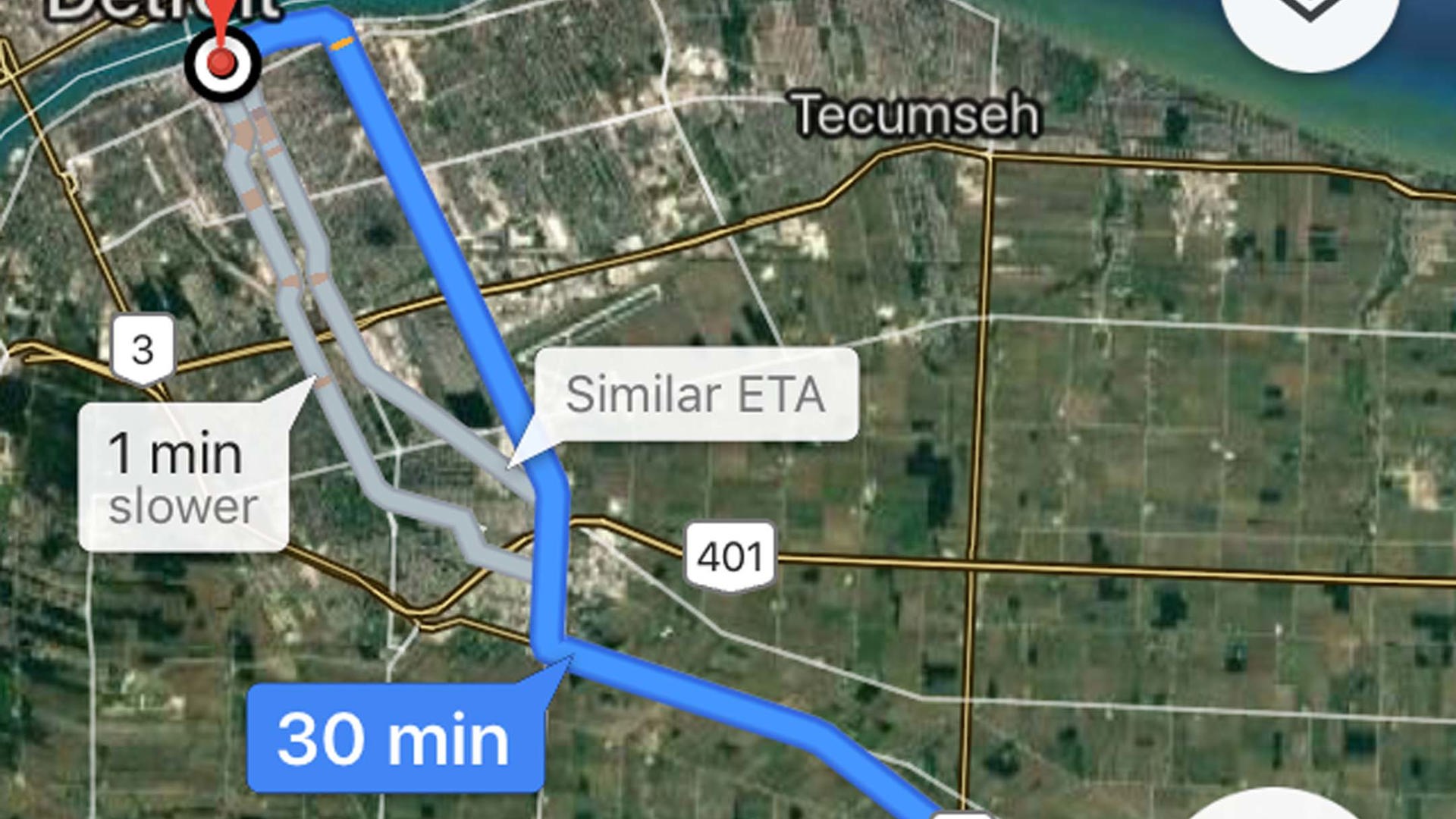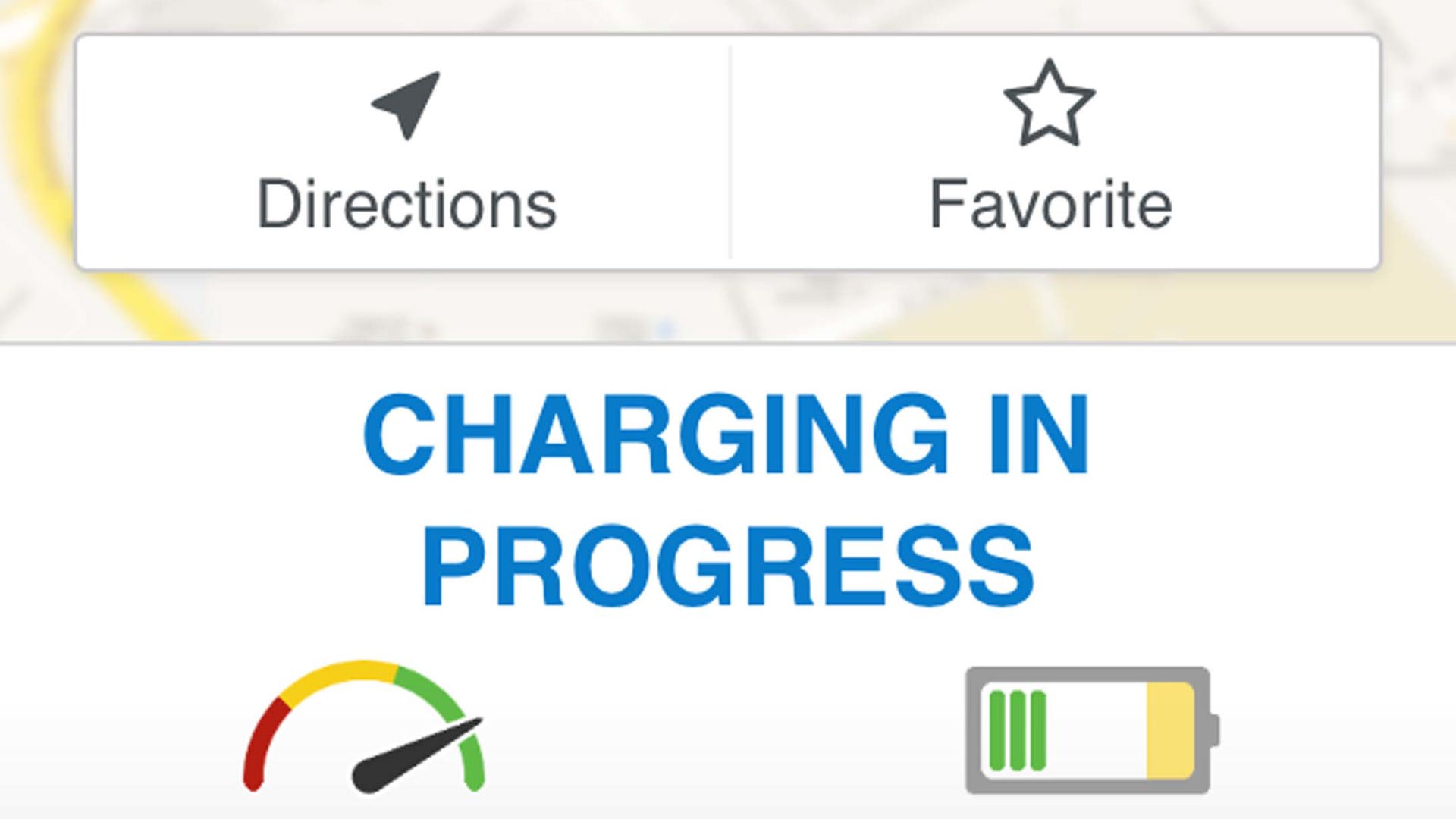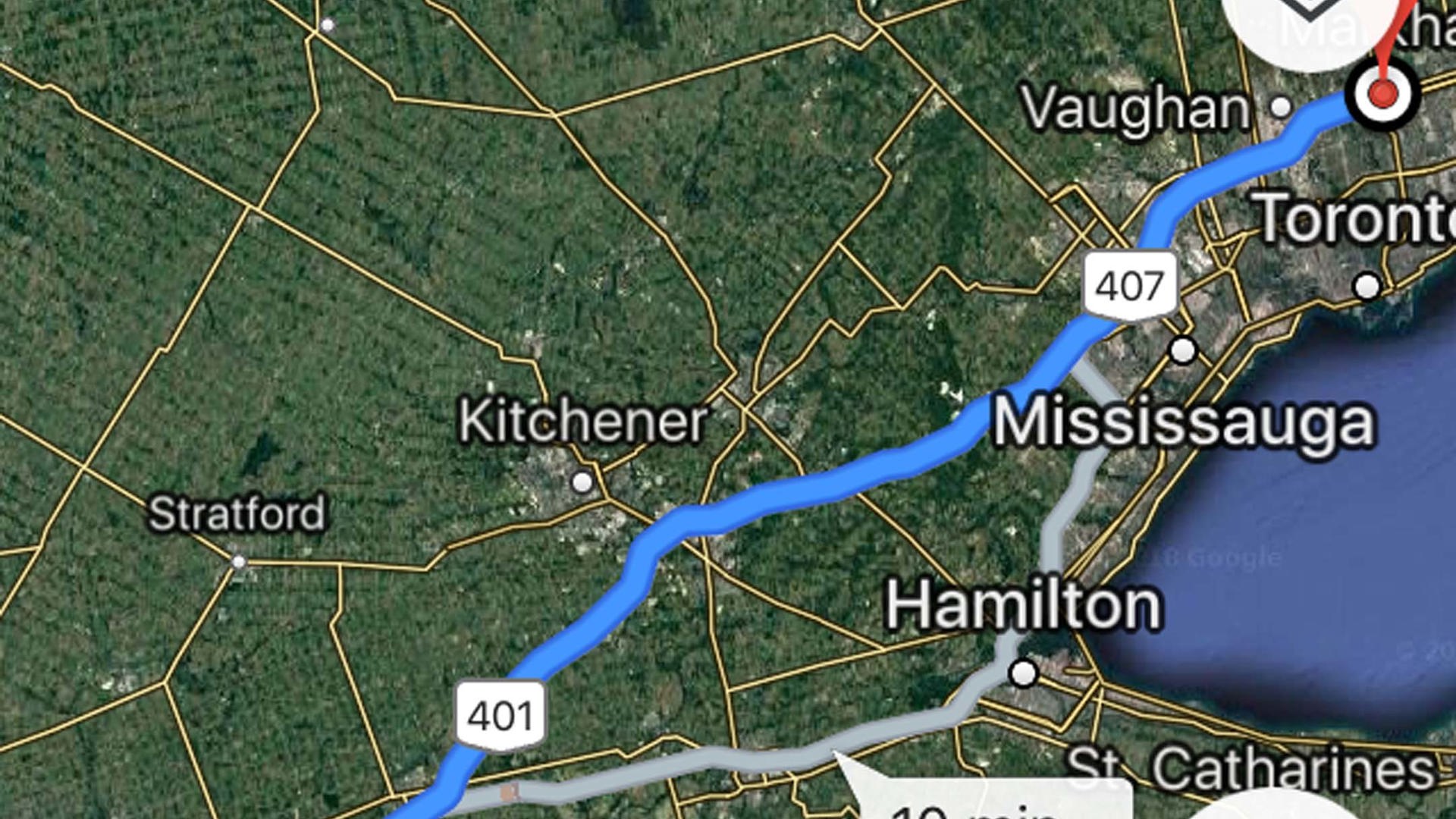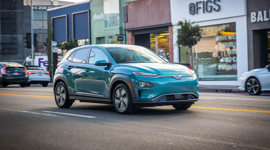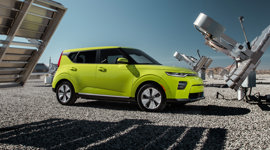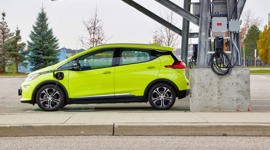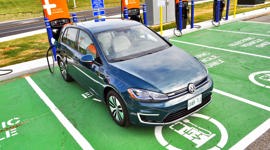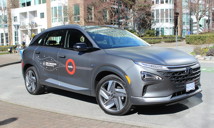I rolled into the parking lot and with a sigh of relief, spotted the charging station right where the app said it would be. The 2019 Hyundai Kona Electric’s navigation system had had trouble pinpointing its exact location, and I’d felt a twinge of anxiety – more immediate and concrete than the range anxiety usually associated with electric vehicles – at being in such a remote location on a cold, dark January night. There’s a thin wind, the sort that blows right through you, and I shivered at the sound of corn stalks rattling in the gloom.
I’d left Peterborough, Ontario, at approximately 10:30 that morning, and had hoped to be in Detroit by nightfall, but here I was at 8:30 on a Sunday night, an hour from my destination and 40 km from the main highway, at a hockey rink surrounded by cornfields.
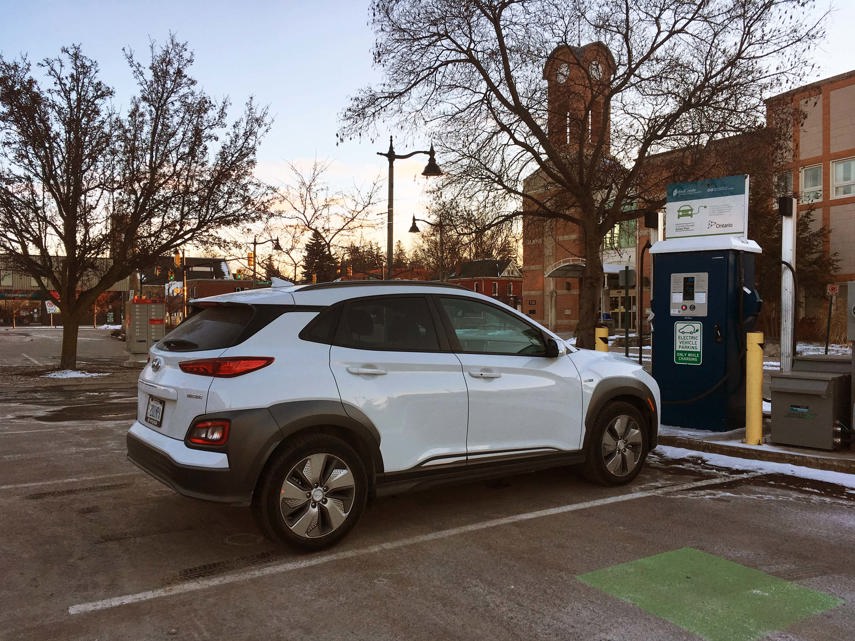
I’d loosely planned my journey using the PlugShare application, a free download that shows worldwide locations of all electric vehicle charging stations. It’s an indispensable tool for travelling EV owners, who enter their starting point and destination and are presented with every station along their route. The search can be filtered to show only certain types of chargers or certain networks, and offers turn-by-turn directions to your selected station. Click on your station choice, and the app gives you all the relevant information you need: whether it’s free or occupied, what type of plug it uses, cost to use – and even a gallery of pictures to help you find it easier.
The confidence I’d started out with some nine hours earlier was somewhat diminished by experiencing the realities of long-distance travel by electric vehicle in Canada. The Hyundai Kona Electric boasts an impressive range of 415 km – the best in its class and equal to that of the Tesla Model 3. However, that number immediately dropped to 374 km in the -8 degree chill, and previous driving style has a big influence on predicted range.
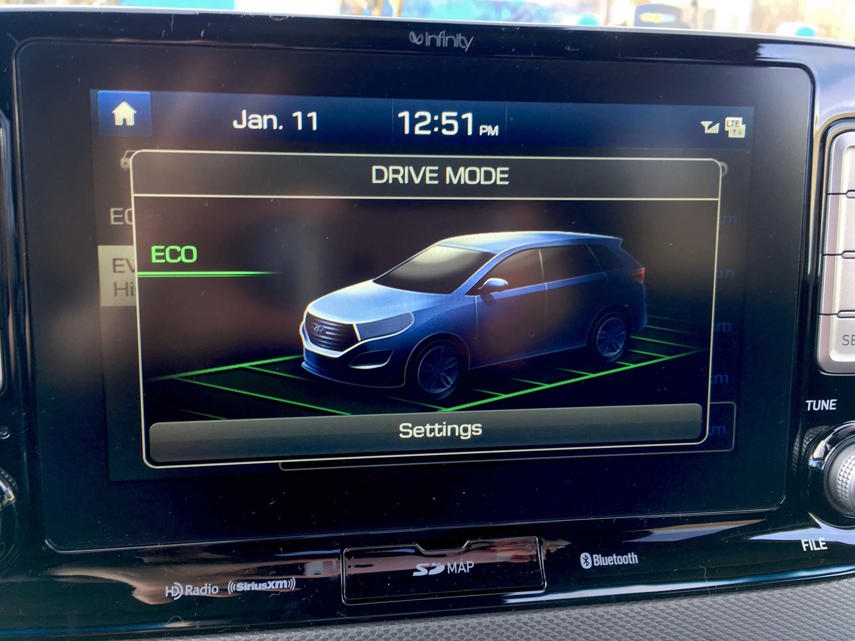
Driving the speed limit made a big difference in energy conservation, and switching from Sport to Eco immediately added 15 km to the range. The cabin’s heating system had an enormous power draw – I saw an immediate drop of 30–50 km depending on how much heat was being used. Steering-wheel and seat heaters, however, seemed to make no difference at all to available range.
The Kona is a likeable compact crossover, with a quirky, grille-less face and a cabin crafted from budget materials that nonetheless manage to deliver on comfort in a reasonably attractive setting. It’s a clean and futuristic aesthetic, from the 8-inch tablet-style main display, to the suspended-bridge-style console. The push-button gear selector takes a little getting used to, but overall the Kona’s ergonomics are surprisingly user-friendly for such a technically sophisticated vehicle.
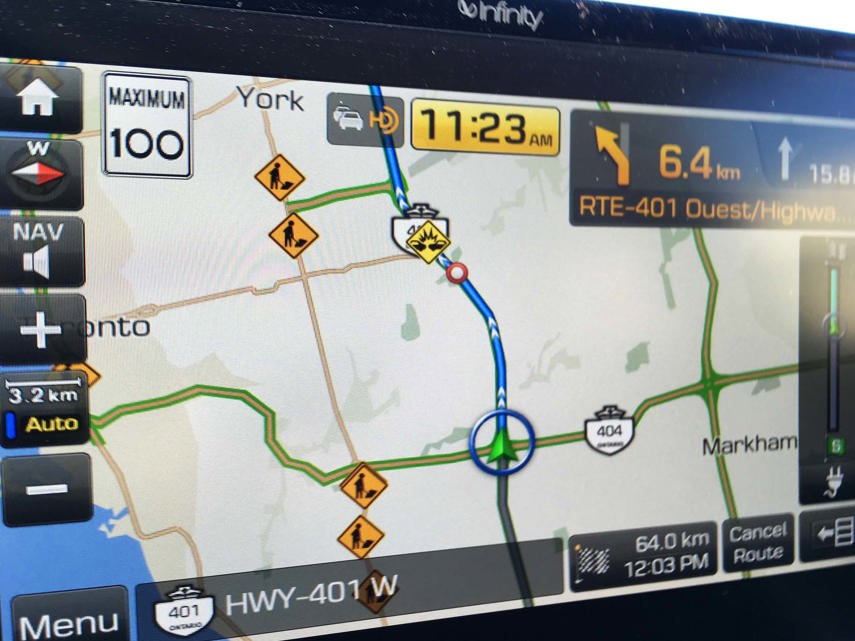
The navigation system warns you if your desired destination exceeds available range, and will search for charge stations en route. Hyundai’s Smart Sense safety suite is standard on all trims, and includes lane-keeping, forward collision avoidance, blind-spot assist, automated high-beams, and pedestrian alert.
Acceleration is surprisingly brisk, thanks to a 201 hp (150 kW) electric motor which delivers power to the front wheels via a single-speed transmission. Energy is stored in a 64 kWh battery located under the floor where it doesn’t compromise interior space – with the added bonus of providing a low centre of gravity and little body roll.
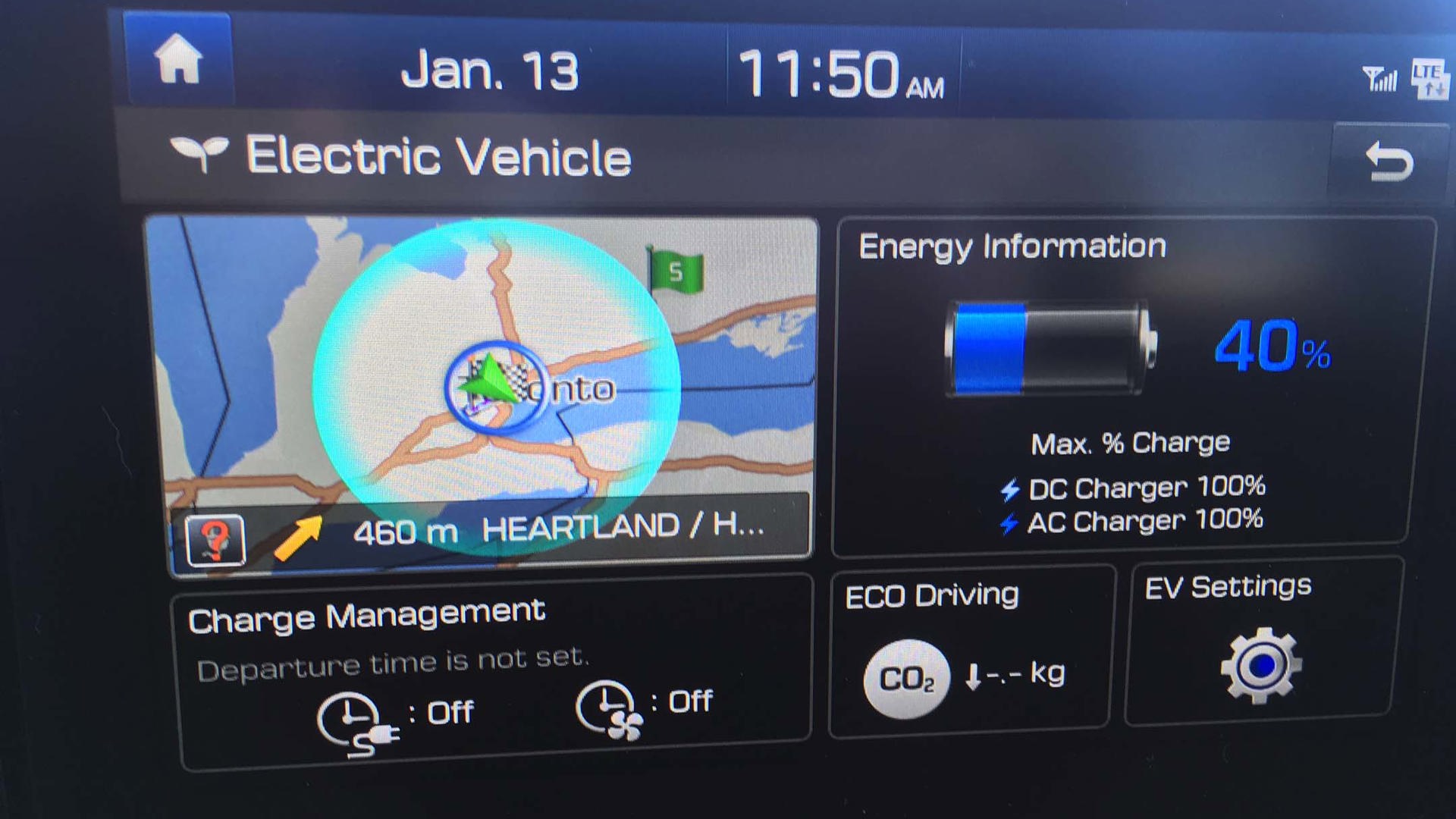
The three drive modes: Eco, Eco+, Normal, and Sport mode change throttle responsiveness and steering weight; in Sport mode this cheerful little beast will chirp its tires while zipping from zero to 100 km in 7.9 seconds. Paddle shifters control the four levels of regenerative braking; at its most aggressive it operates as a one-pedal drive.
There are several networks of charging stations available in Canada, and my plan had been to use FLO and ChargePoint, two well-established networks with wide-ranging coverage. EV owners would probably order their own tap card, but I had downloaded their respective apps to my smartphone. I’d narrowed my search to include only Level 3 stations, which would charge the Kona up to 88 percent in roughly an hour. Level 2 chargers were cheaper and more abundant, but would require leaving the car plugged in for up to 9 hours to fully charge.
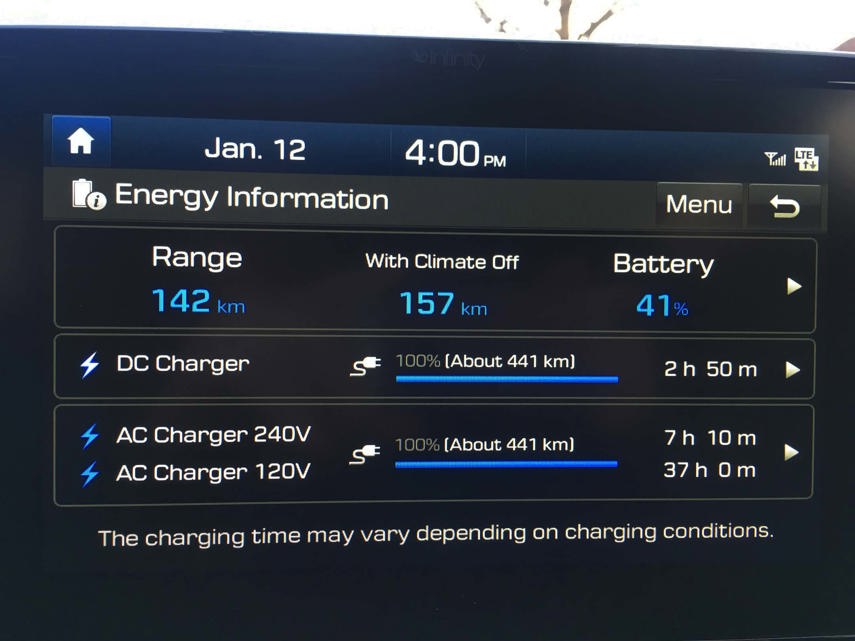
Although many large malls now feature banks of Tesla charging stations, their plug is a proprietary fit that isn’t compatible with any other vehicle. Tesla owners, however, can purchase an adapter to use regular stations. Level 3 chargers come with two types of SAE combo plugs: CCS, which fit the Kona; and CHAdeMO, used by others such as the Nissan Leaf.
My first scheduled stop was at a ChargePoint station in a small plaza in Milton. The Kona’s key fob had conveniently come with a ChargePoint tap card, but I quickly found that it worked with free Level 1 chargers only. Opening the ChargePoint app on my phone, I successfully managed to link it to the station – but it refused to debit my account and the transaction was declined.
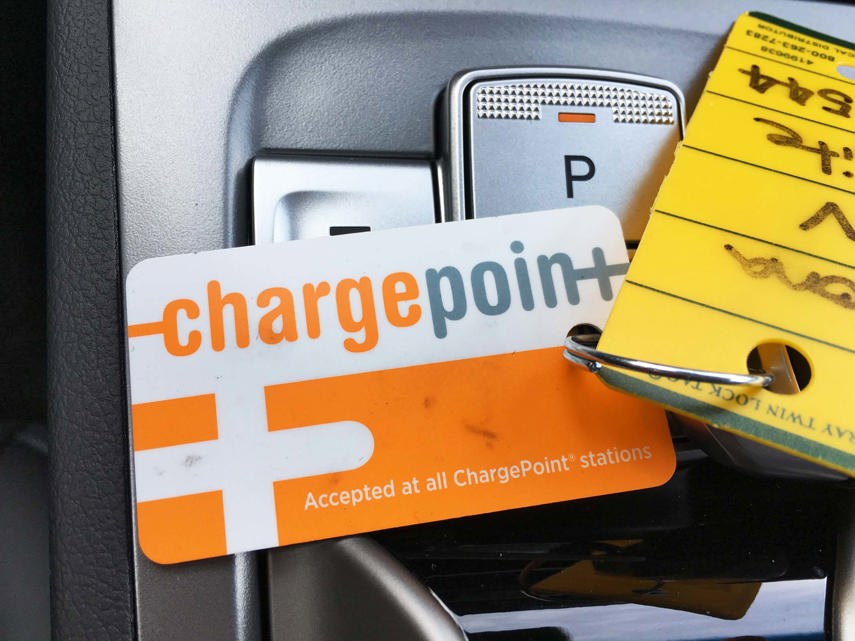
After several repeated attempts, I returned to PlugShare to find the nearest FLO station, a network I’d already used successfully. Unfortunately, it was occupied, which meant travelling to Burlington to find the next best choice. By this time, my range had dropped to 70 km. Putting on my hat and scarf, I switched to Eco+ to conserve energy and rolled in with 20 km to spare.
There were two side-by-side Level 3 FLO stations, and both were empty. Once you’ve created a profile, you can then upload money from a credit card to be used to pay for charging. Then it’s a matter of linking the smartphone to the station, much as you would use Bluetooth to link to a car. Once the charge is in progress, the connection is locked, and must be cancelled on either the phone or the car to release the plug.
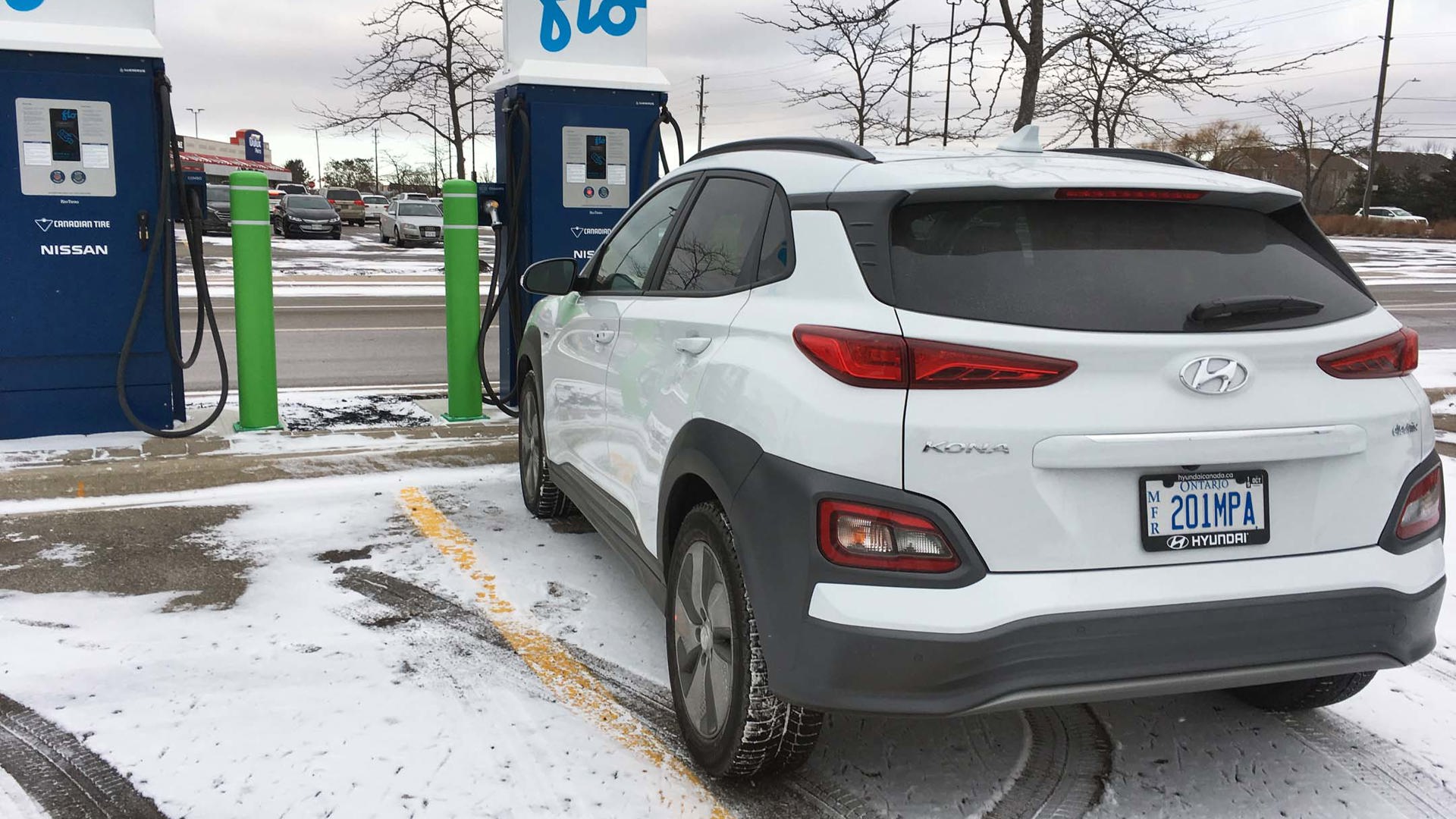
I plugged in the Kona, the station acknowledged that there was a connection, and using the cellphone app, I pressed charge. As luck would have it, we were right outside a Vietnamese restaurant where I warmed up over an excellent bowl of pho while using the FLO app to monitor the charging progress.
Sounds simple, doesn’t it? In a perfect world – or one with a developed infrastructure – it should be this easy. But the reality is that there are still a lot of shaky variables that have to line up before long-distance EV travel can be considered reliable.
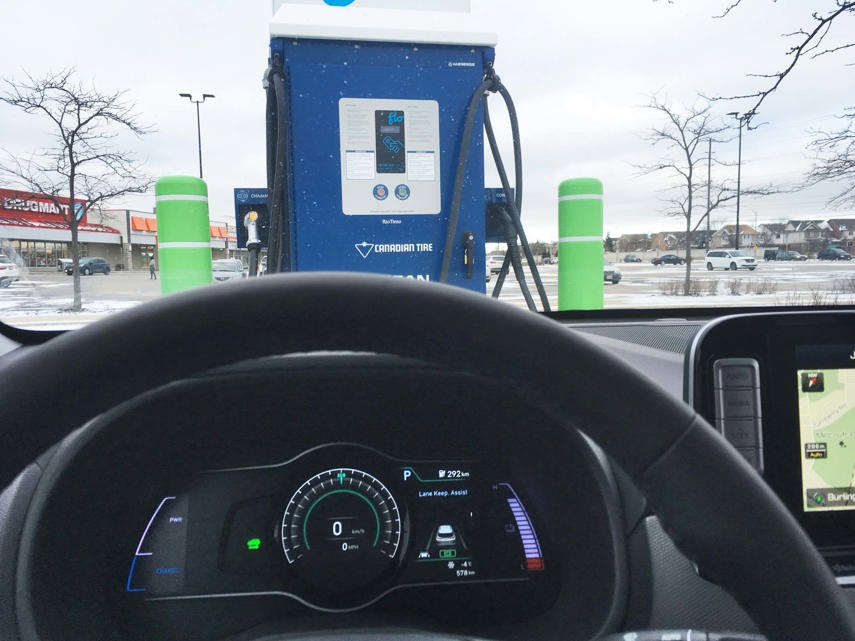
The majority of chargers are located in large urban centres – and there are none at the rest stops located on the 401 corridor where other travellers conveniently gas up. Petro-Canada recently announced a plan to build 50 fast-charge stations coast-to-coast along the Trans Canada Highway by next year, and Shell claims they’re planning a worldwide charging infrastructure.
In the meantime, drivers may have to travel several miles from the main highway, and stations aren’t always available – or functioning. Location can be another source of anxiety, particularly for lone, or female travellers. There isn’t always a warm – or safe – place within walking distance to wait while charging. Using a smartphone app for the transactions means ensuring that your phone is fully charged, and within range.
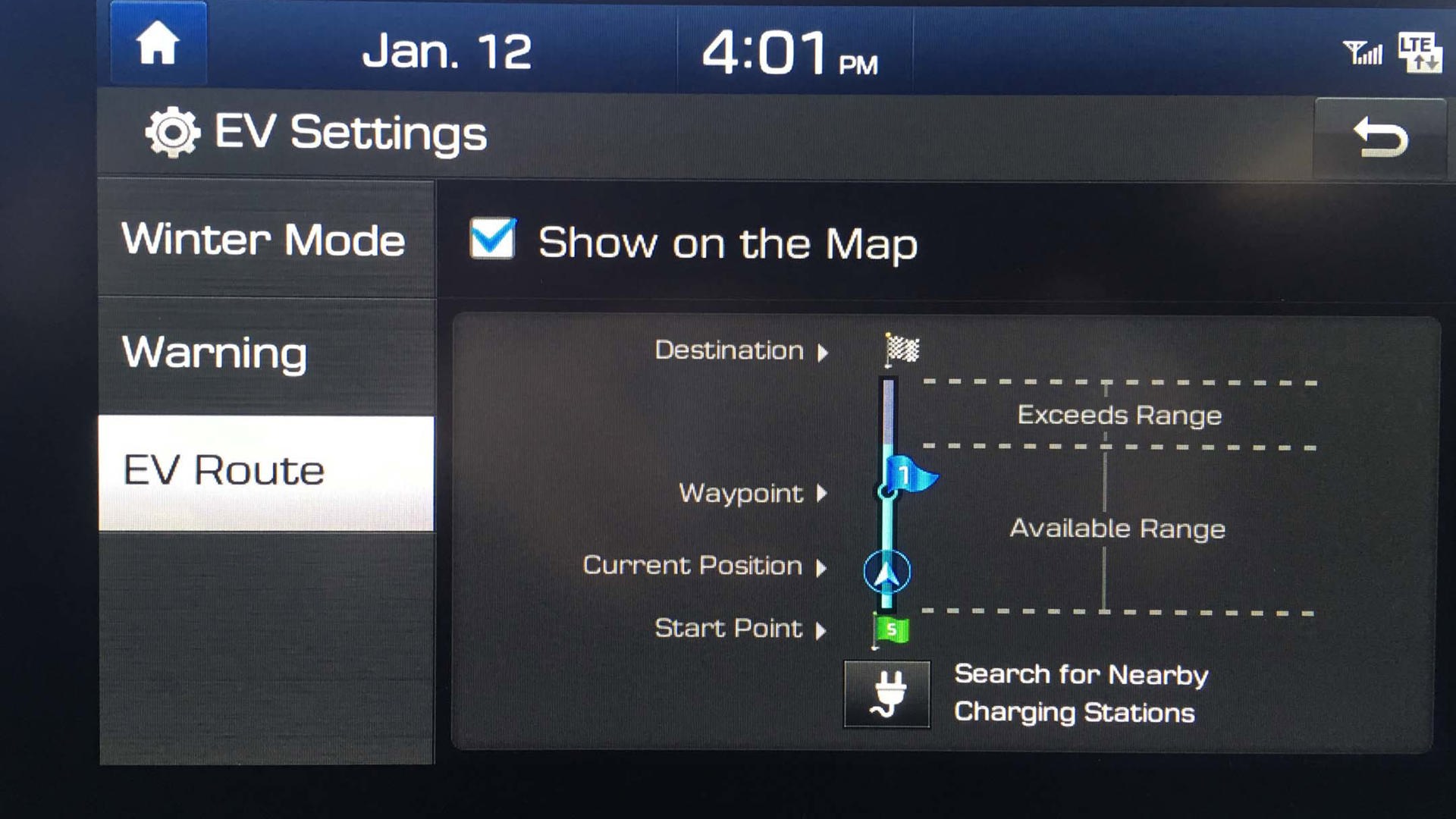
Then there’s the price to consider. Electric vehicles aren’t cheap and now that Ontario has killed the once lucrative rebate, it takes longer to justify the money spent versus the savings in fuel. A gas-powered Kona with all the frills tops out at $31,899, while the Kona EV is $51,999 for the loaded Ultimate. The now-defunct rebate could’ve reduced that price by as much as $14,000 to $37,999.
Fuel consumption for the FWD Kona is 7.9 L/100 km, combined, and 8.6 L for all-wheel-drive models. Assuming fuel is $1.30 per litre, that works out to 10.2¢ and 10.9¢ per litre respectively. Driving 1159 km in the Kona Electric cost $107.64 in total, which works out to 9.3¢/km. Of course, the electric Kona is far less costly when it comes to regular maintenance – it needs no fluids, no tune-ups, no exhaust replacement – and it also produces no emissions.
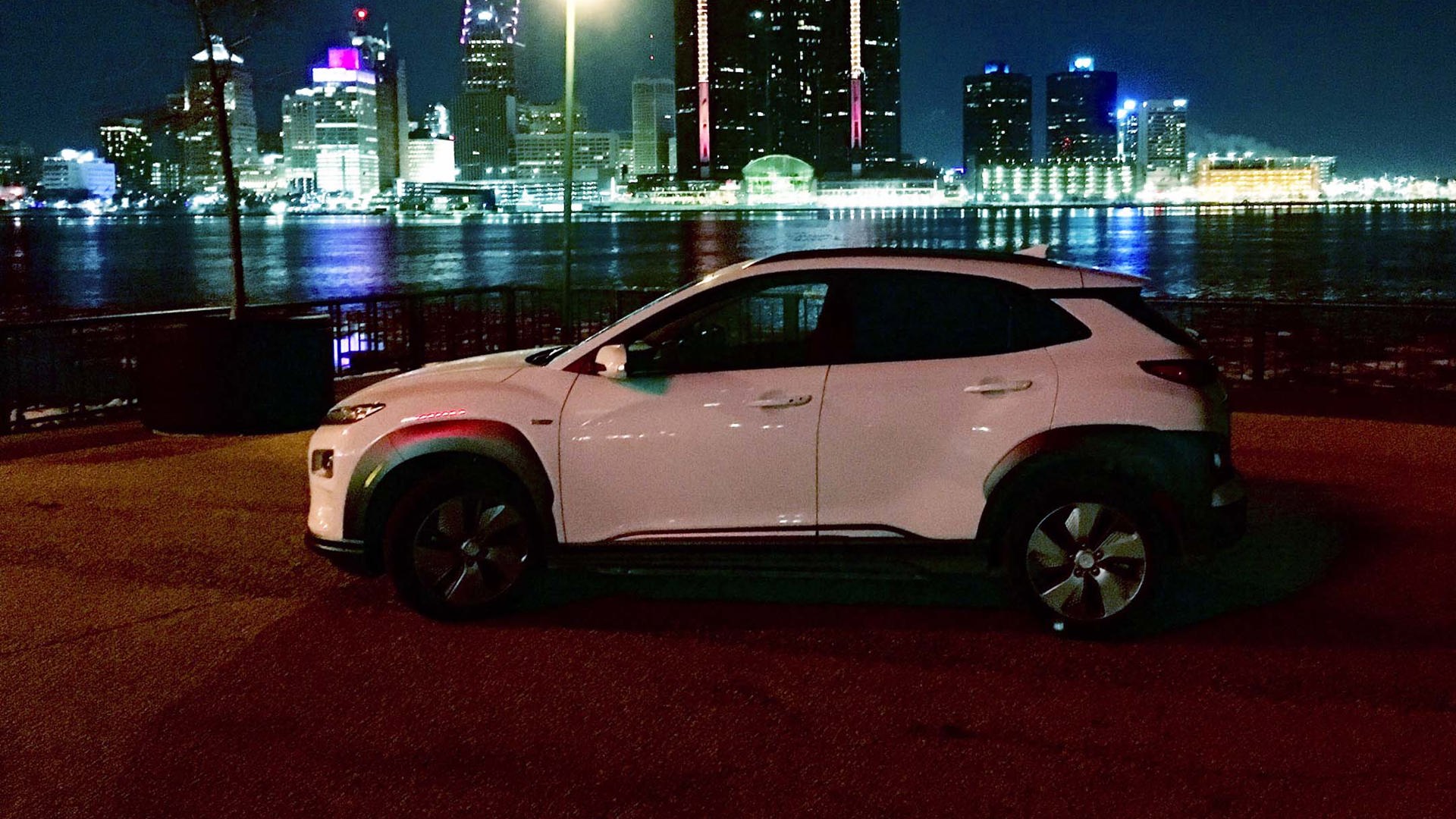
While I really enjoyed the Kona’s character, handling, and technical sophistication, I was far more relaxed when driving an equal distance in the Honda Clarity Hybrid later that week. Having that back-up engine and its vast network of fuel support was reassuring, and the majority of EV buyers are more comfortable with a hybrid. Great sweeping changes involve growing pains – and surely the original motorized vehicles had their own version of range anxiety.
The Kona E is one example that electric vehicles are now genuinely viable, even over long distances. They’re ready – they’re just waiting for the infrastructure to catch up.
